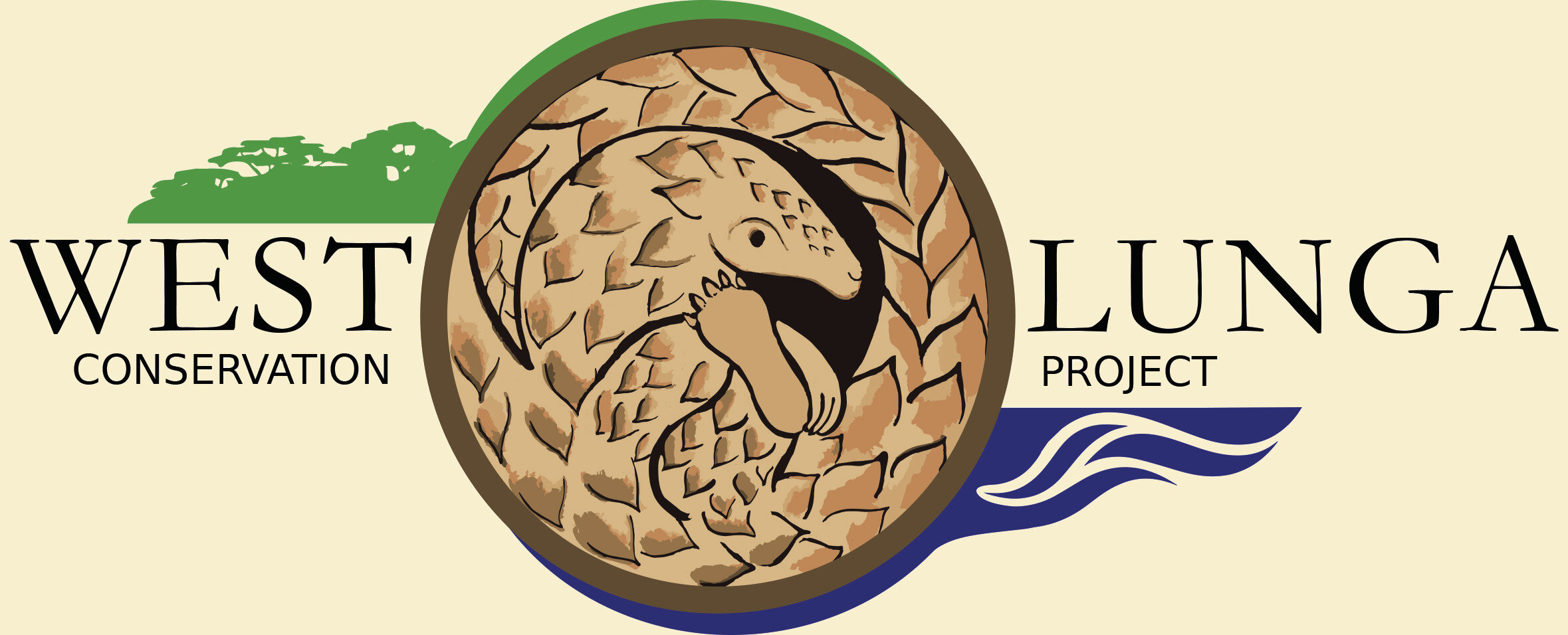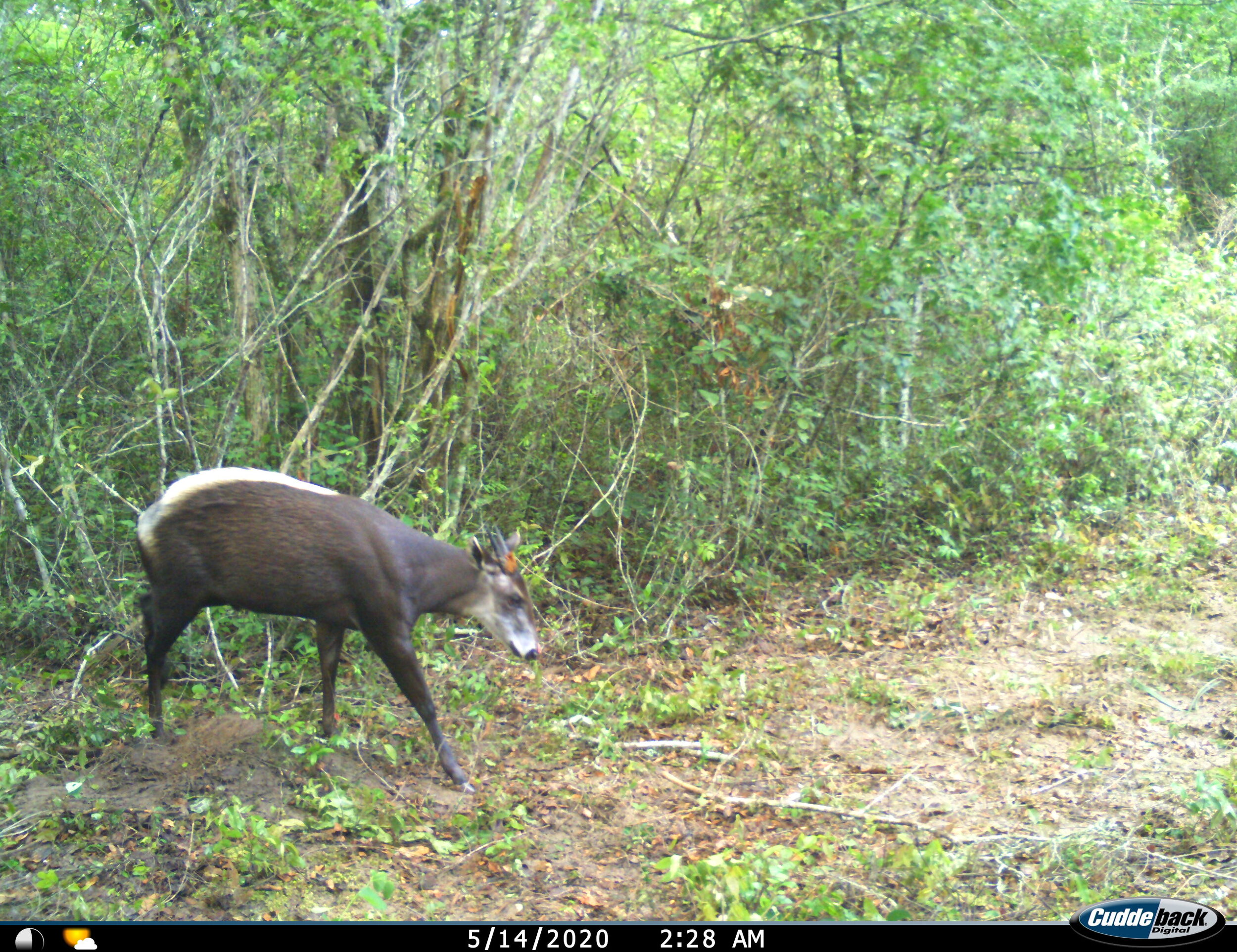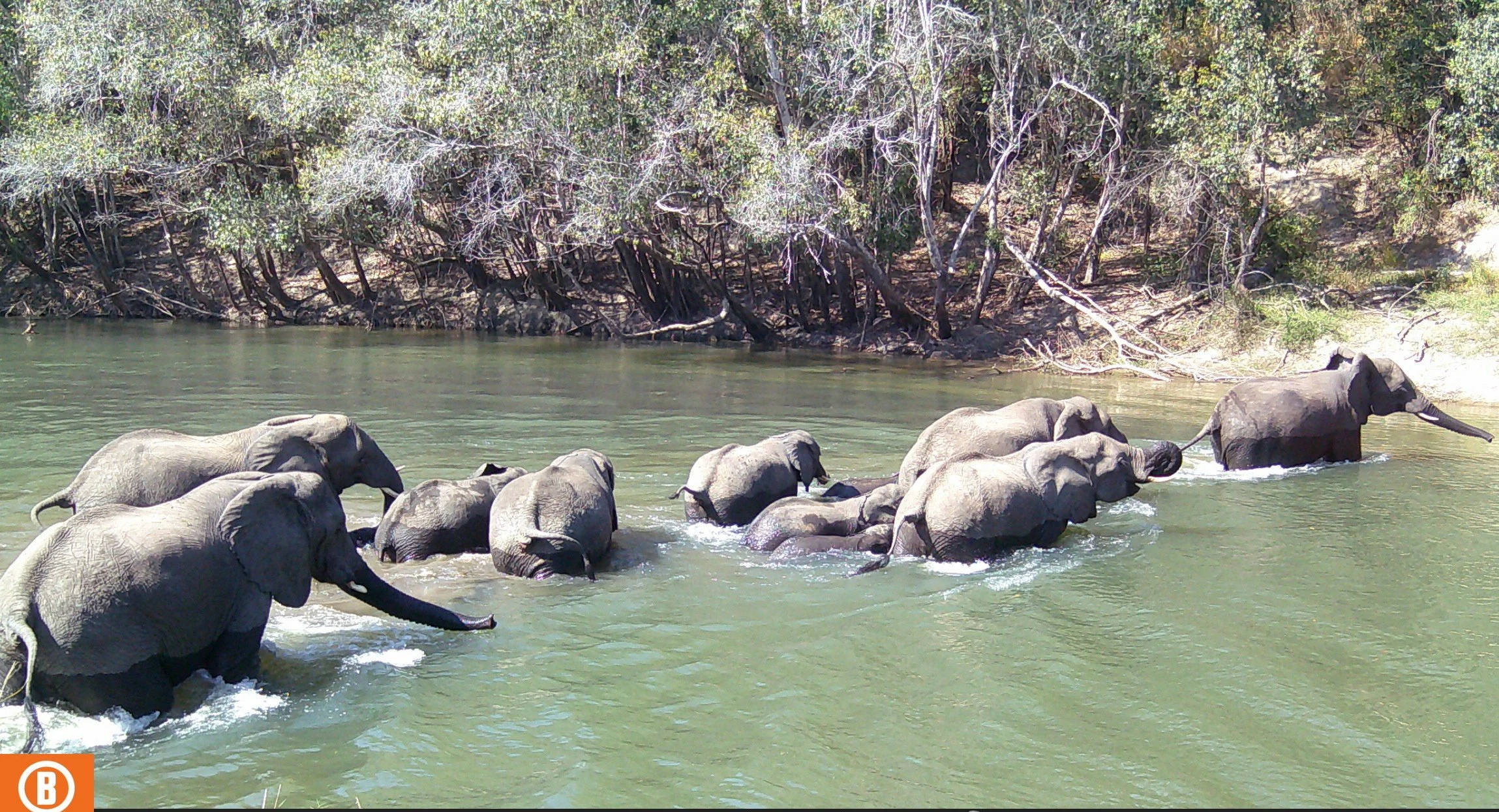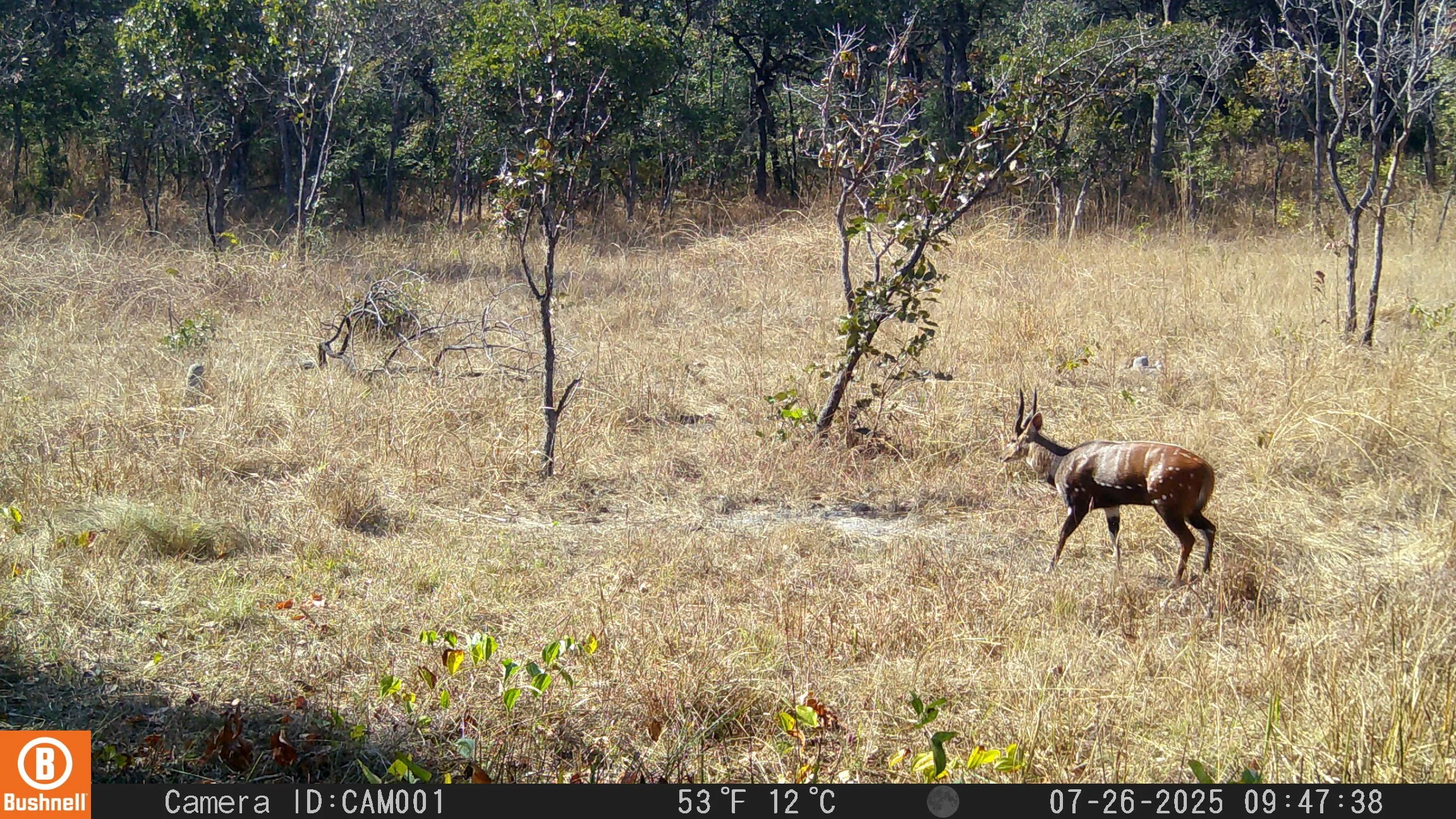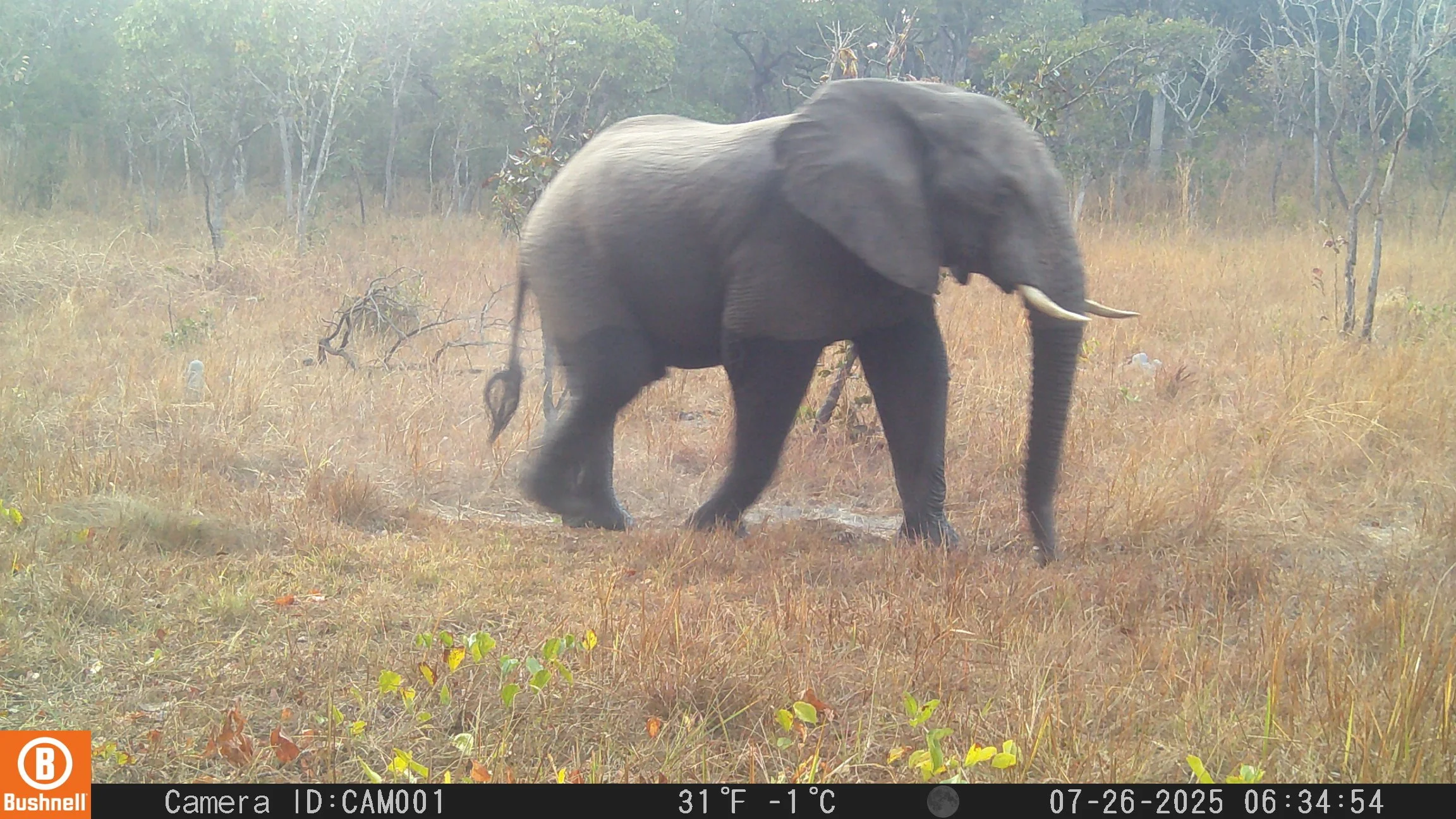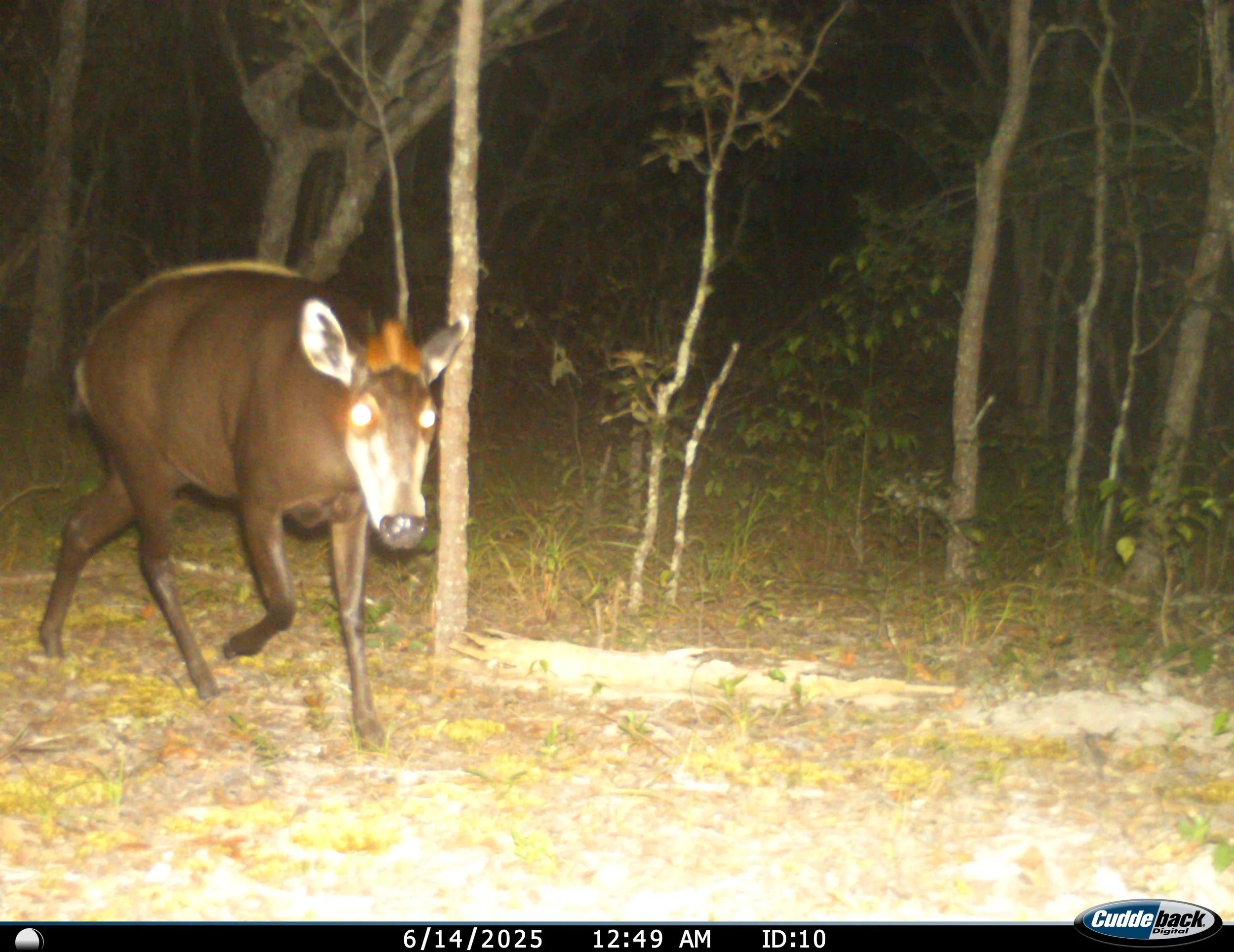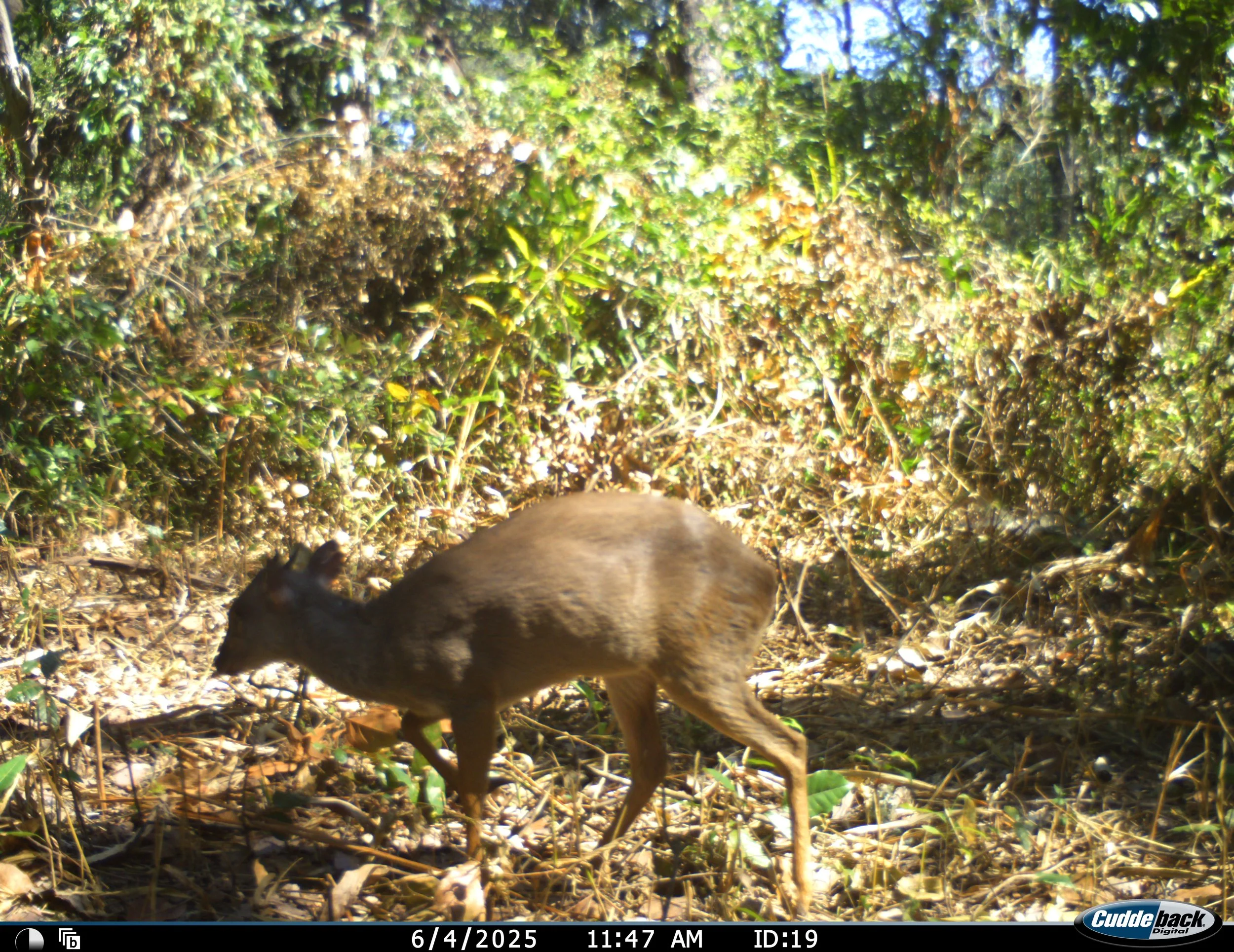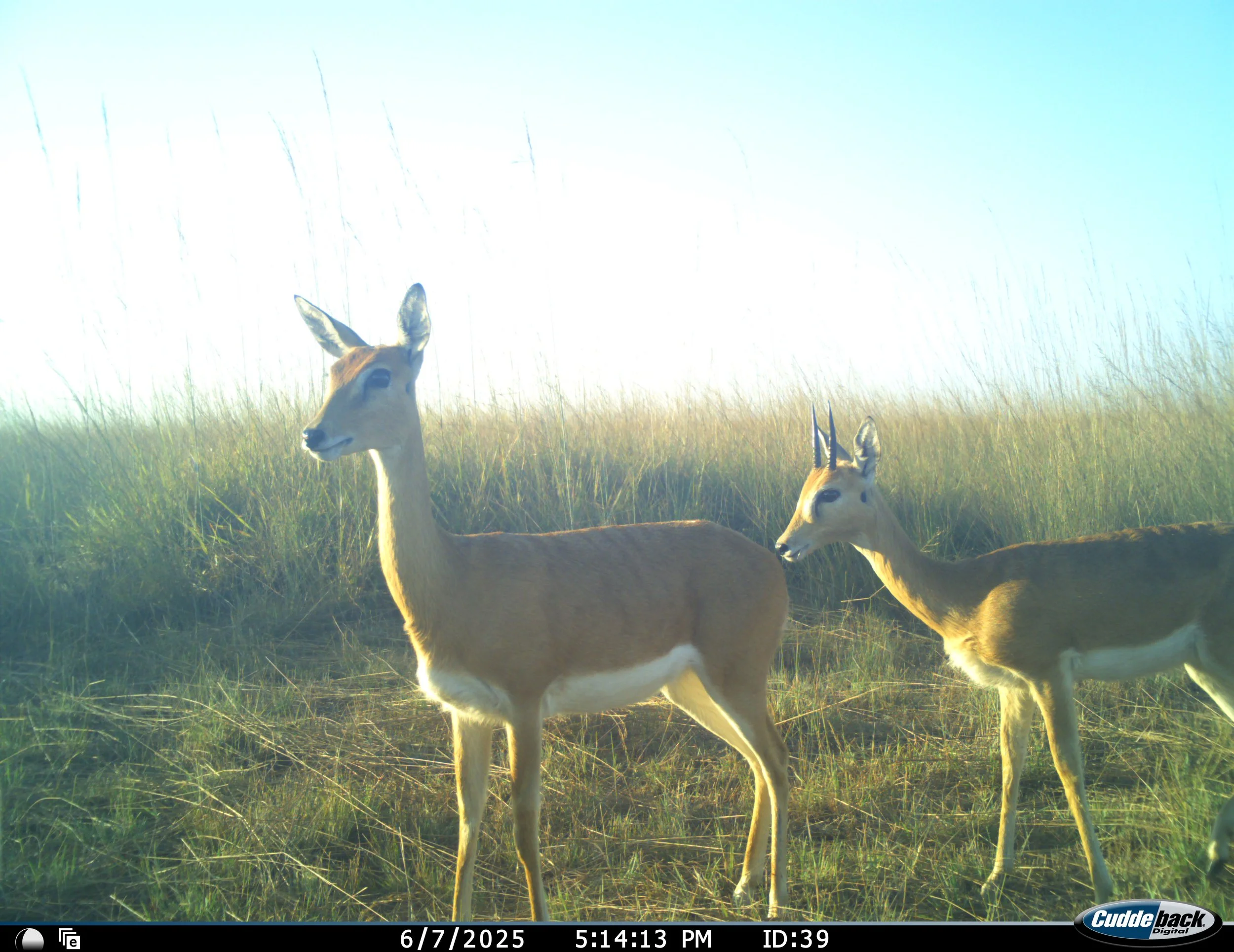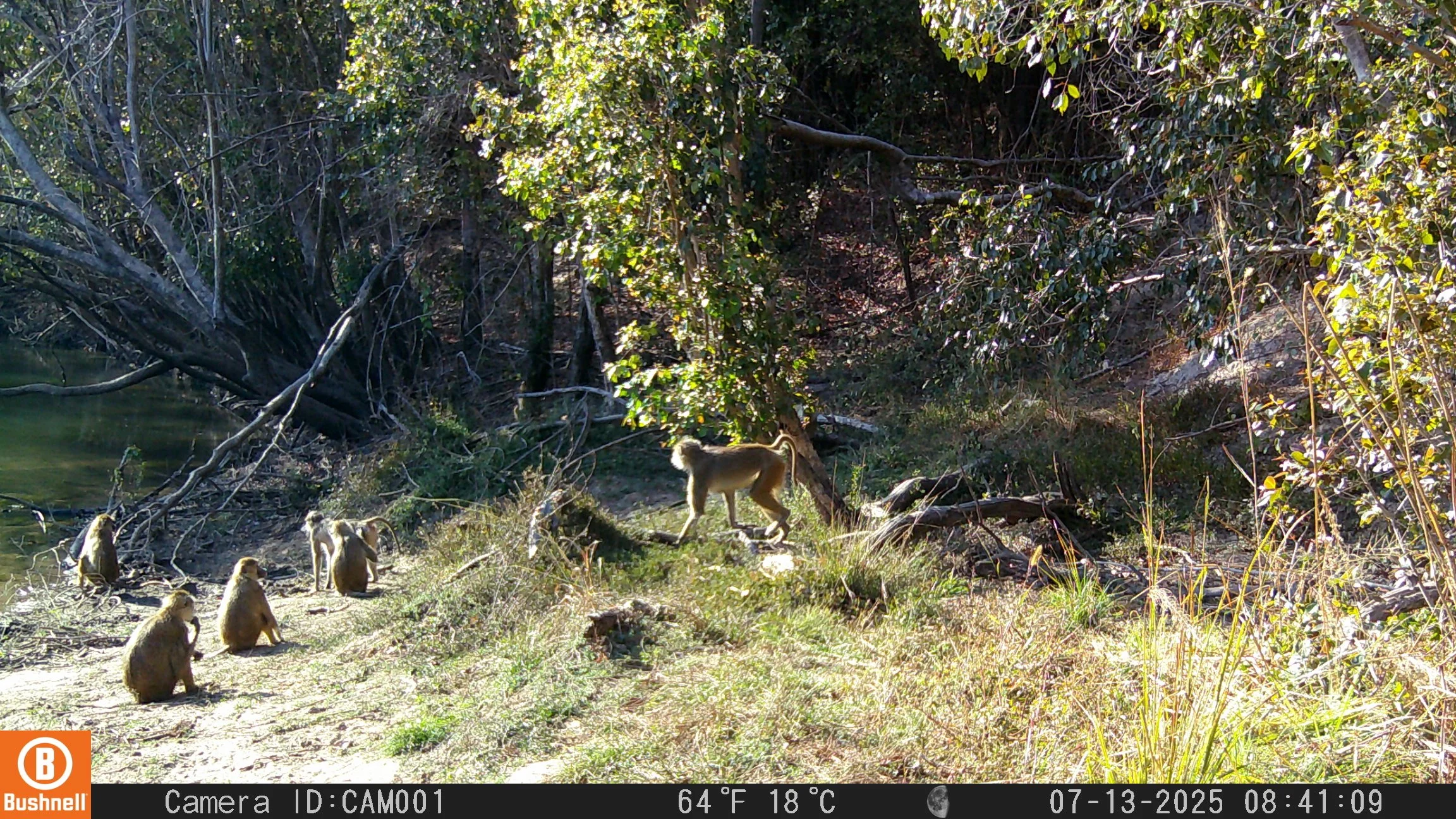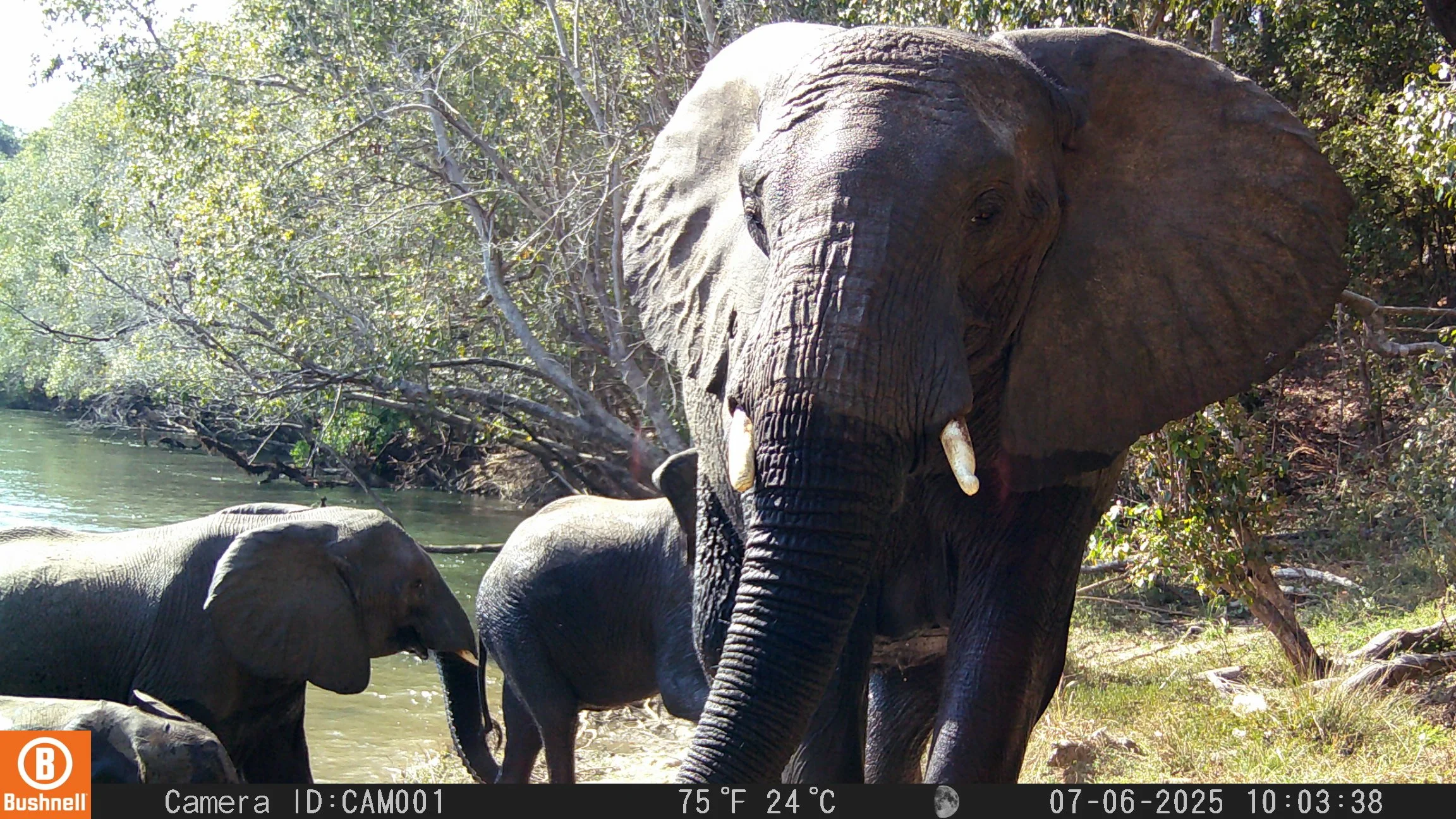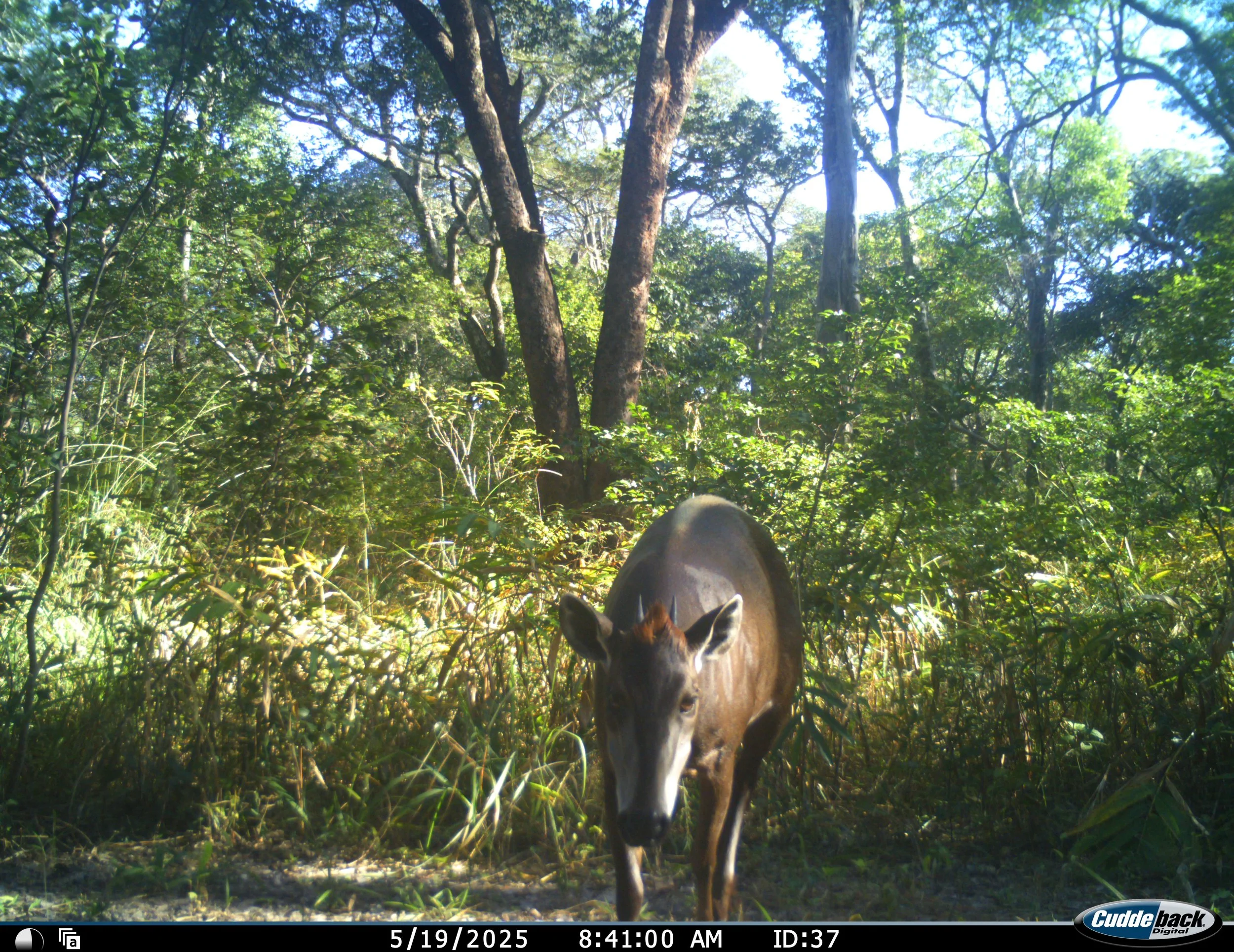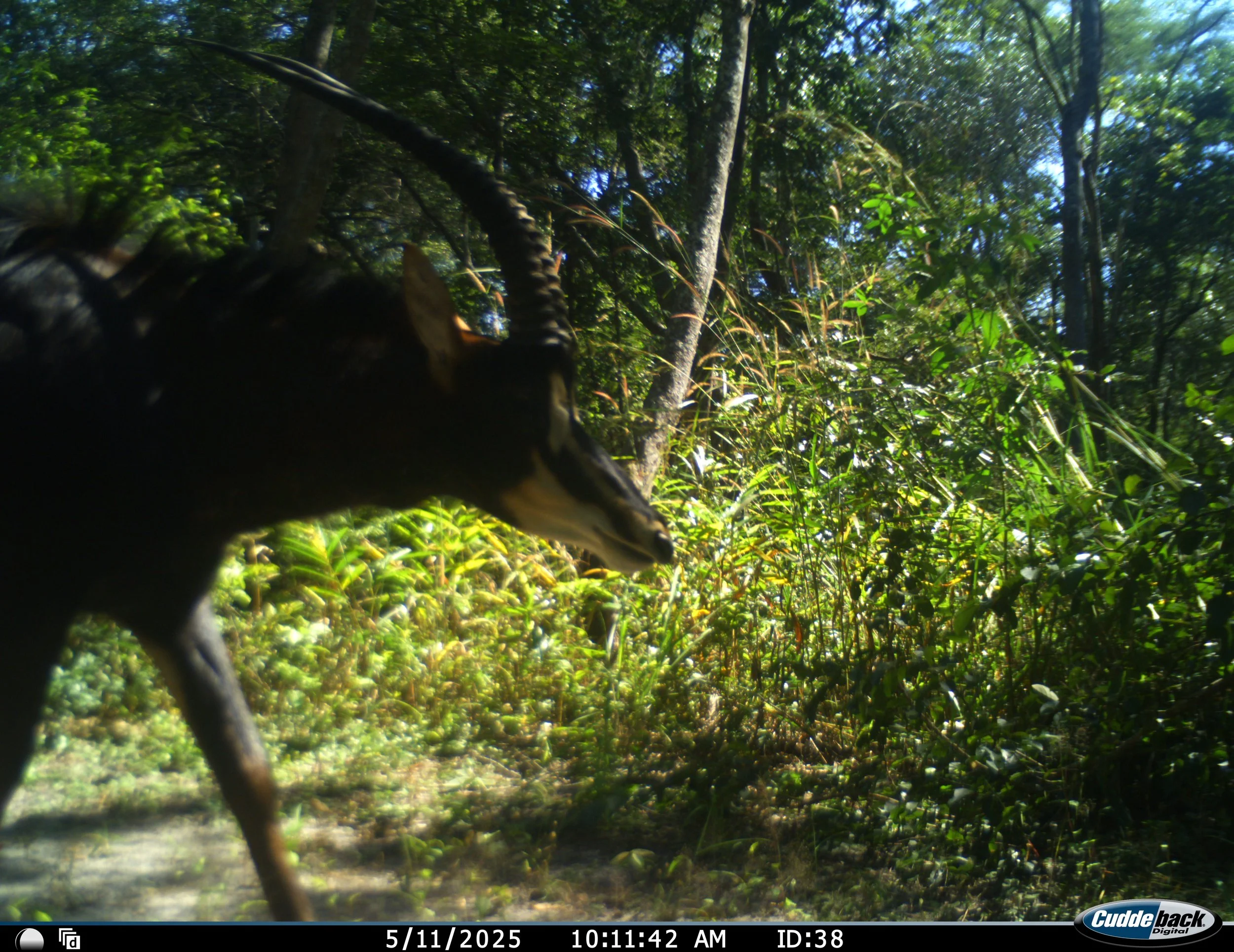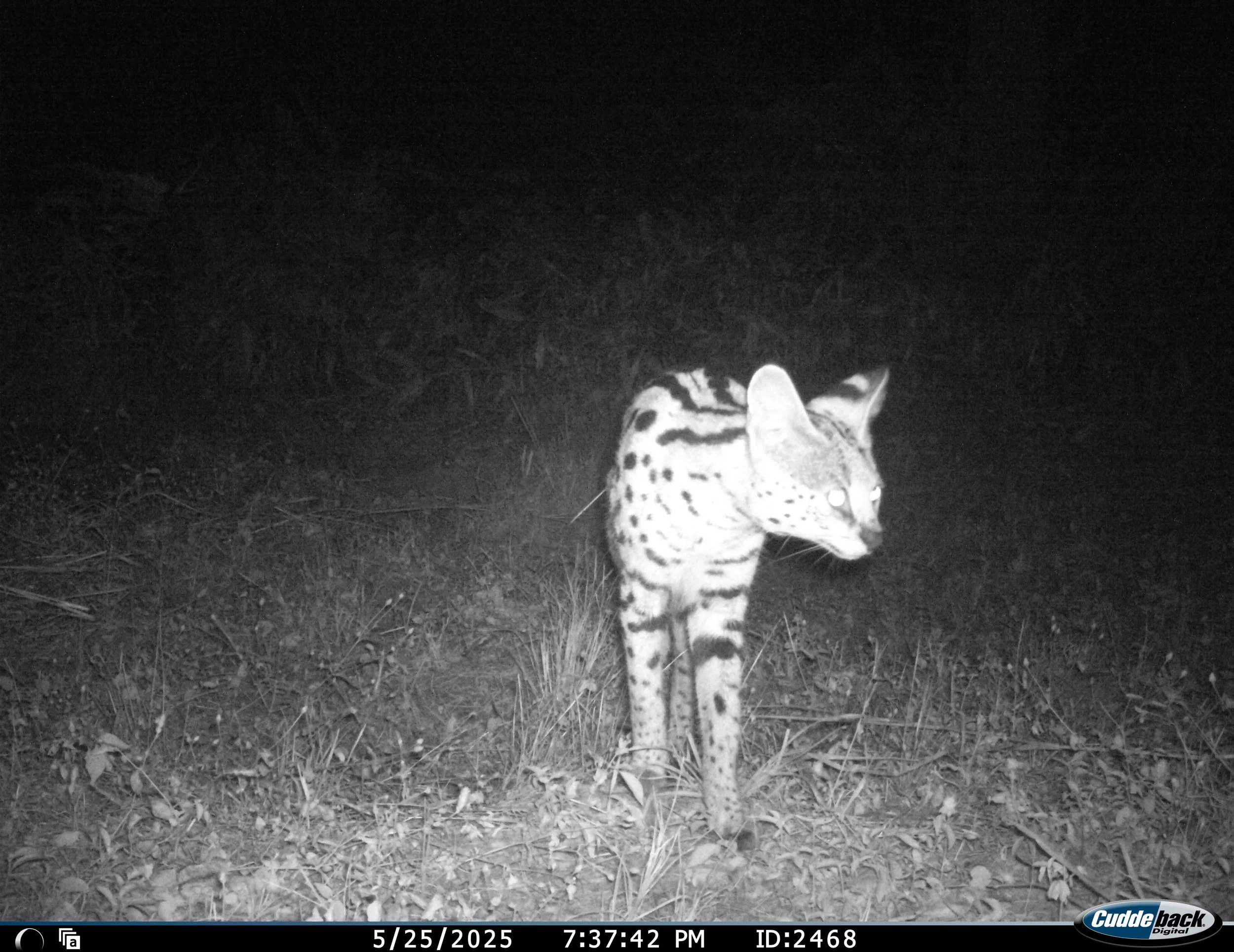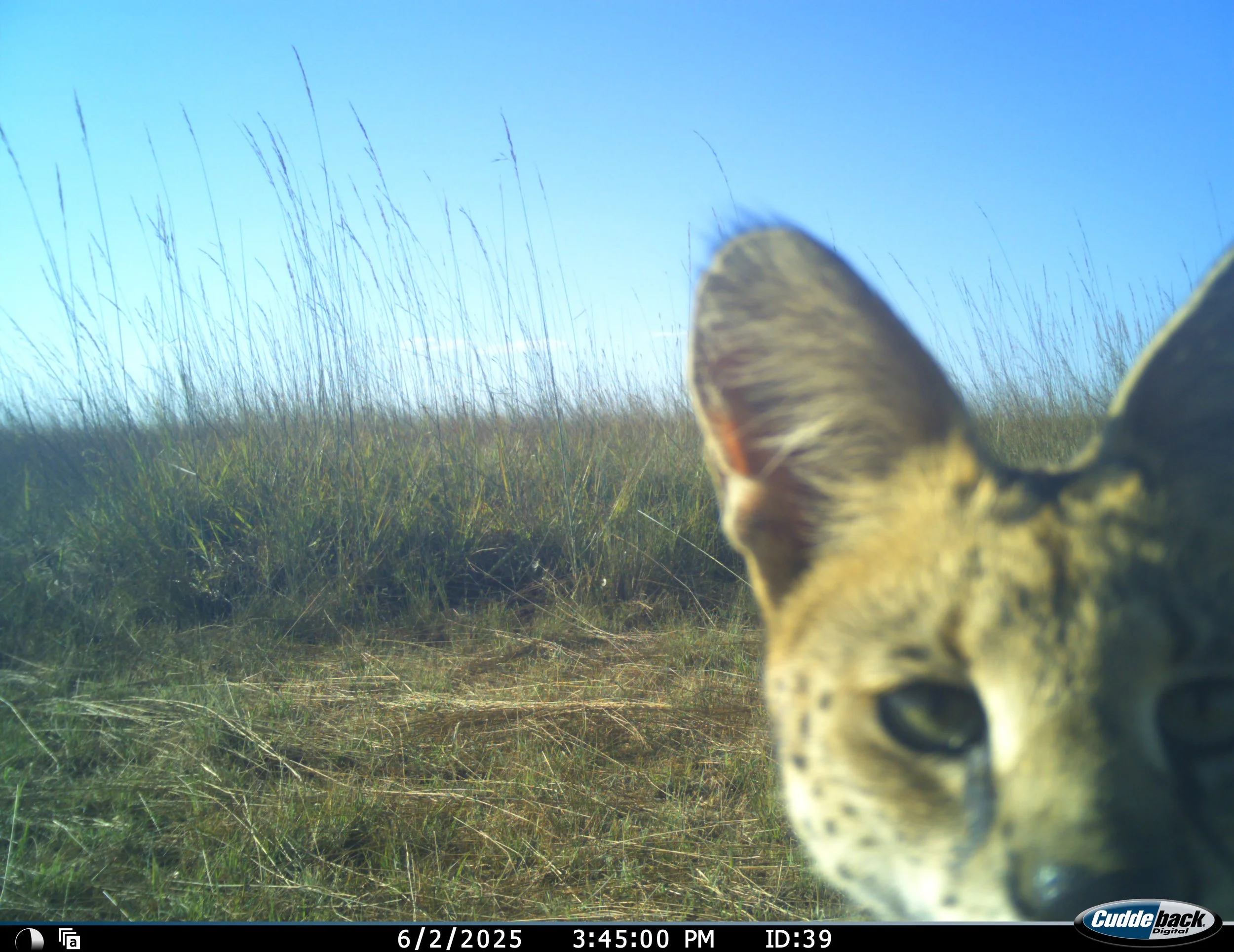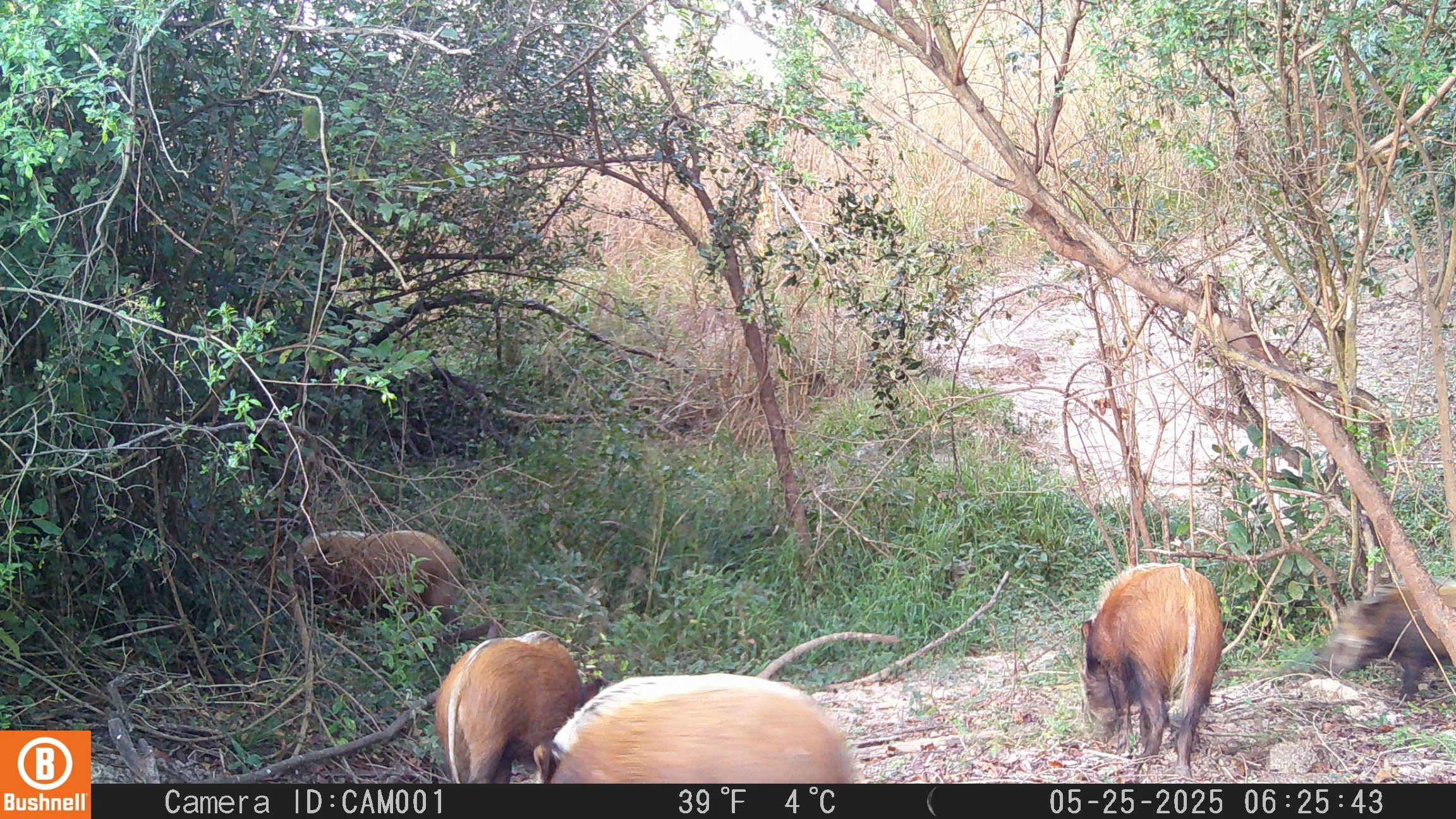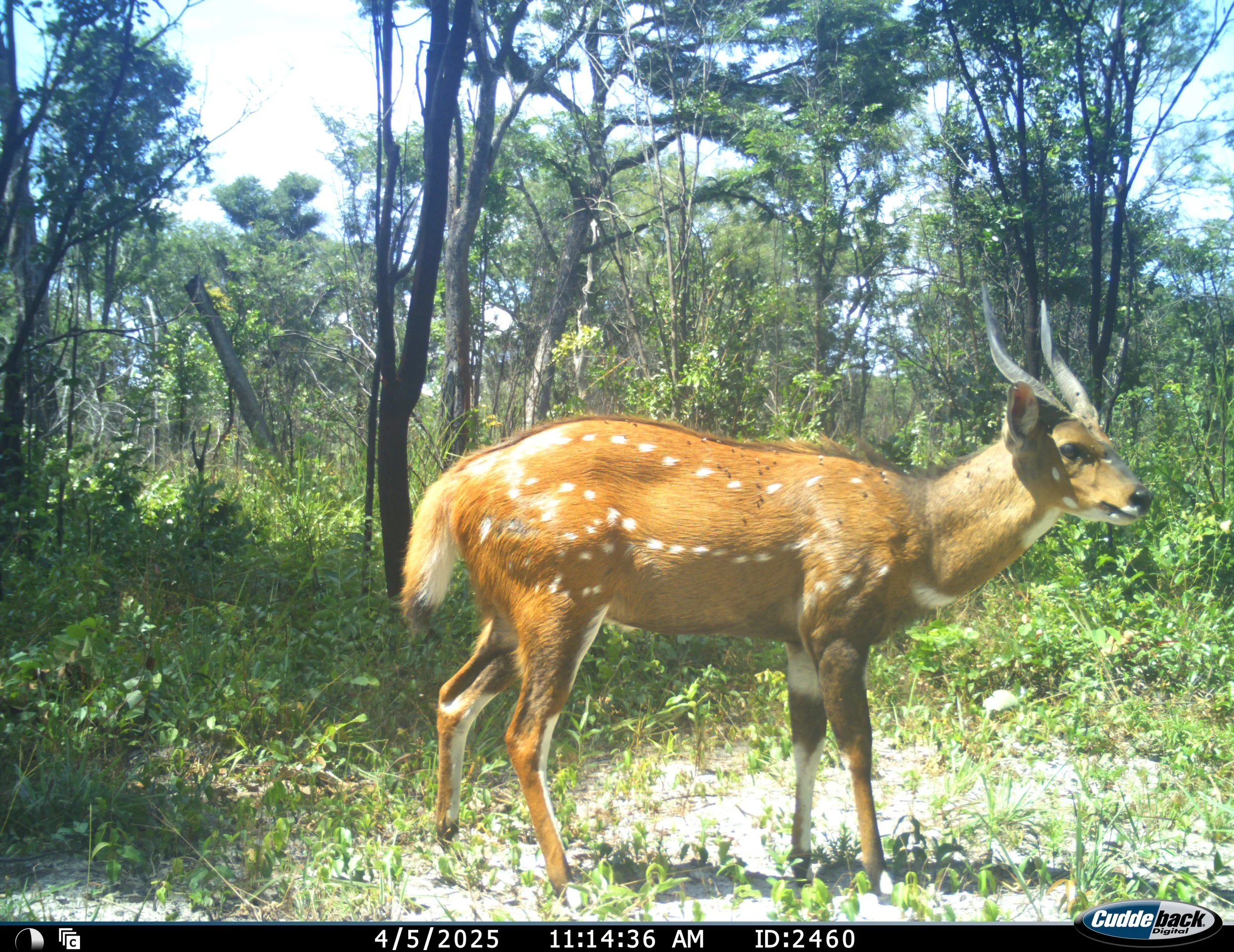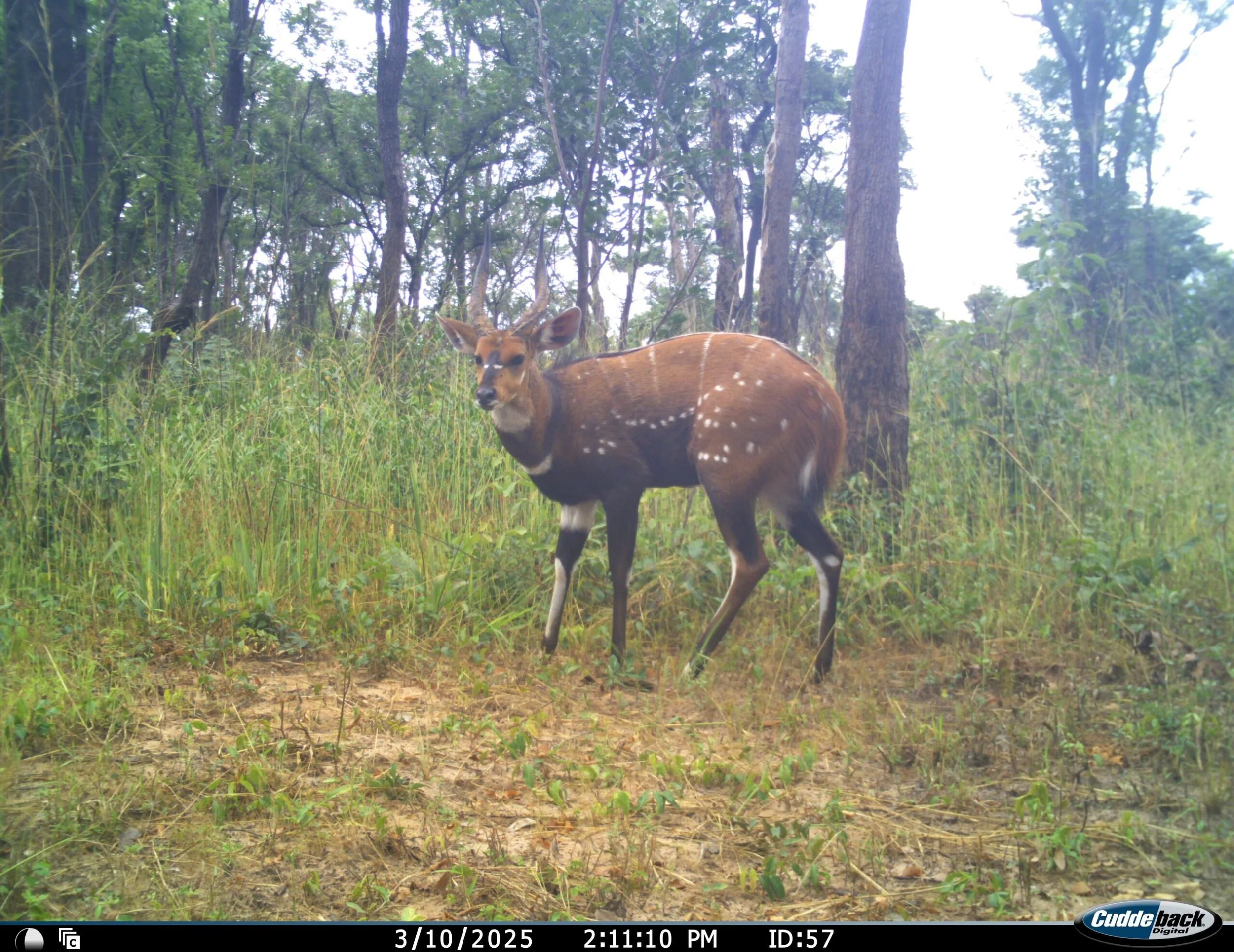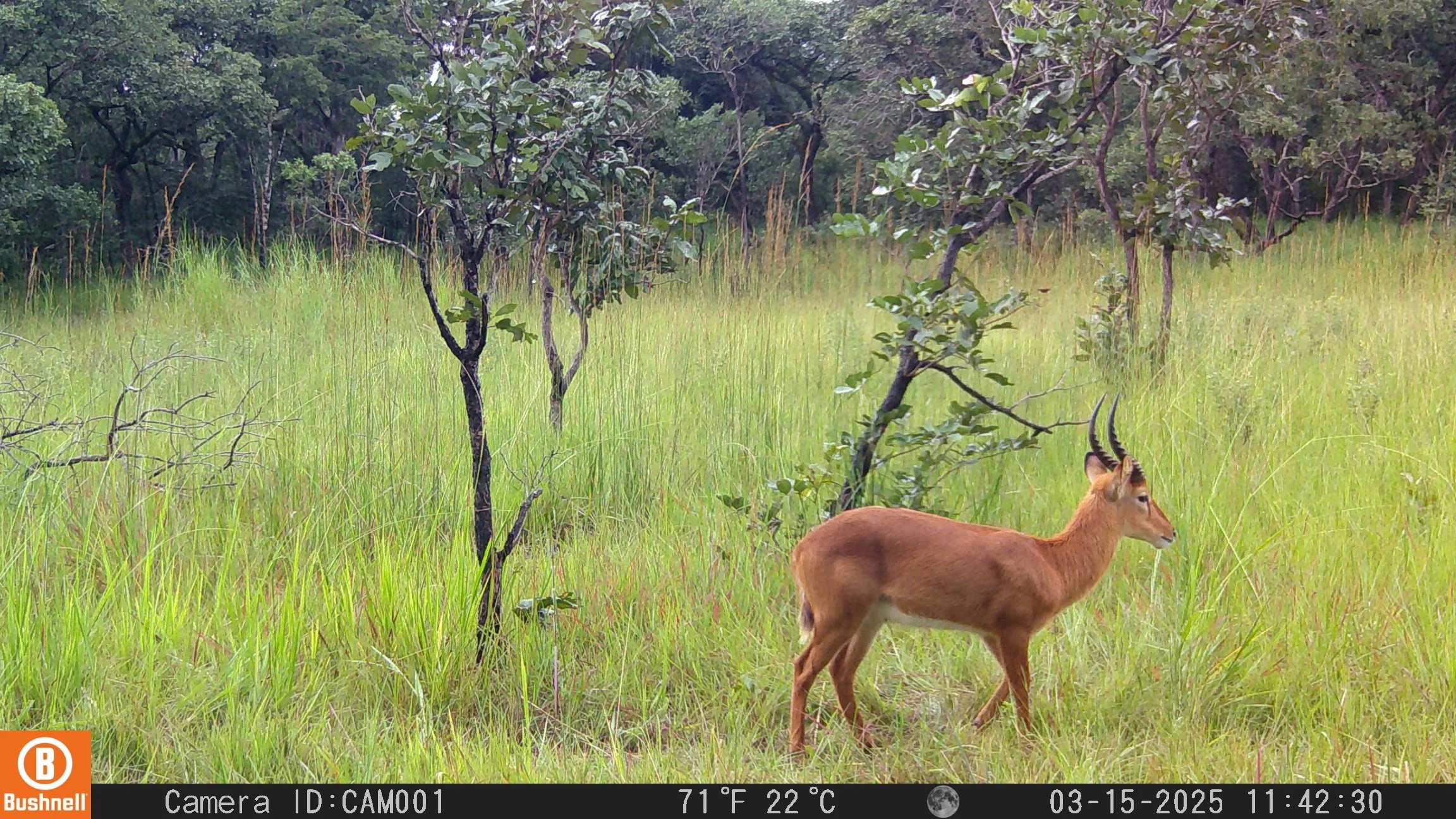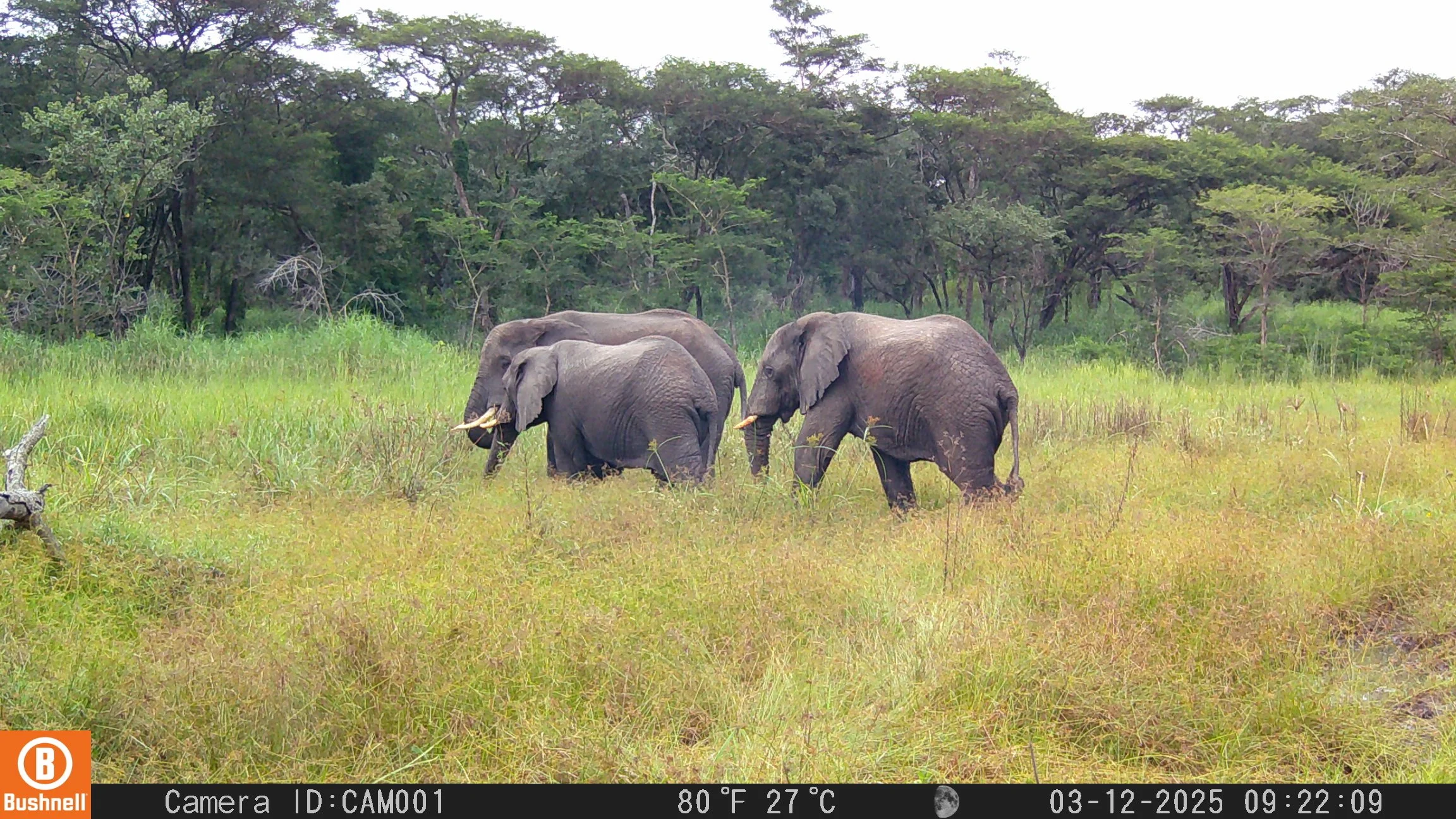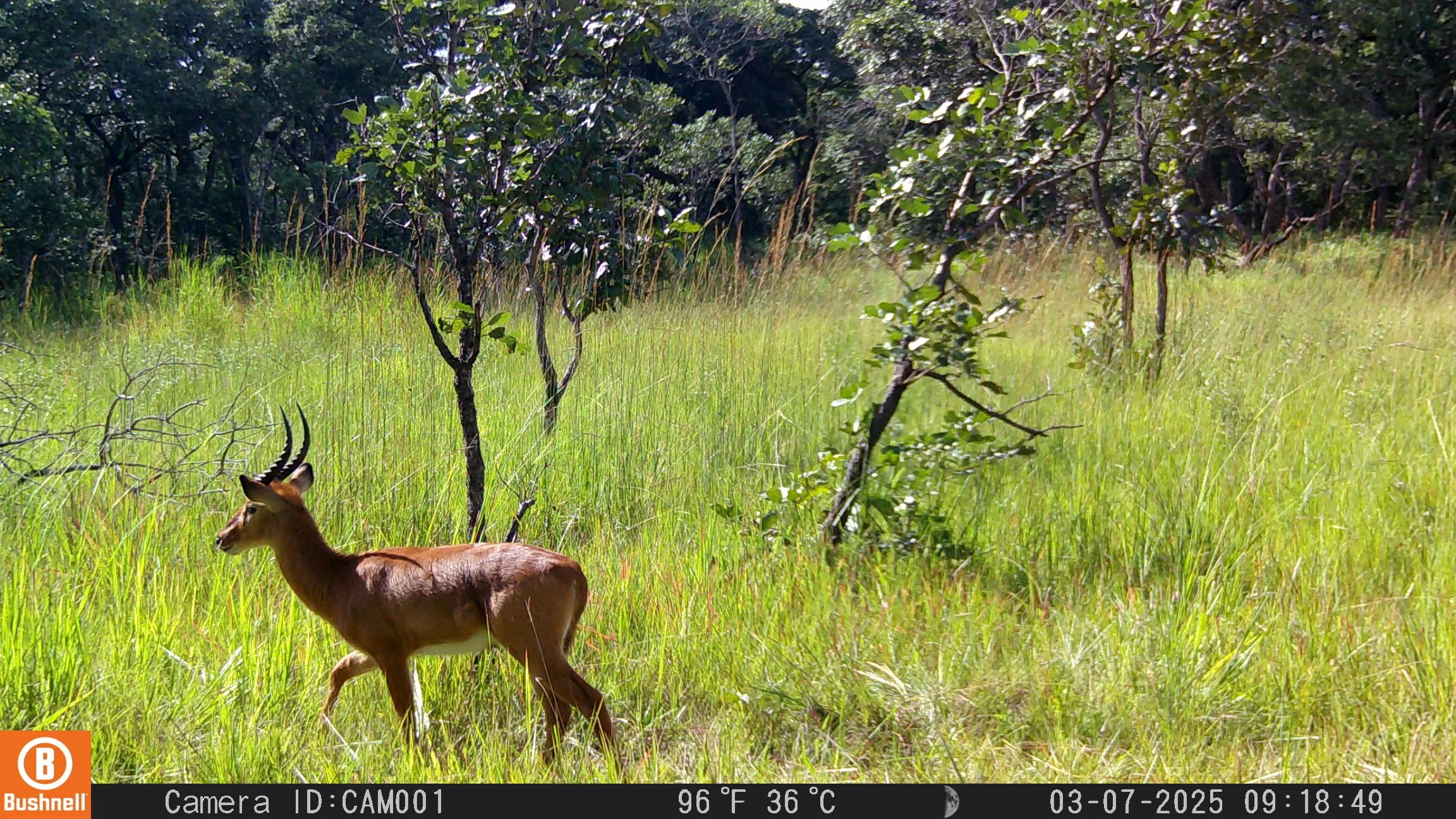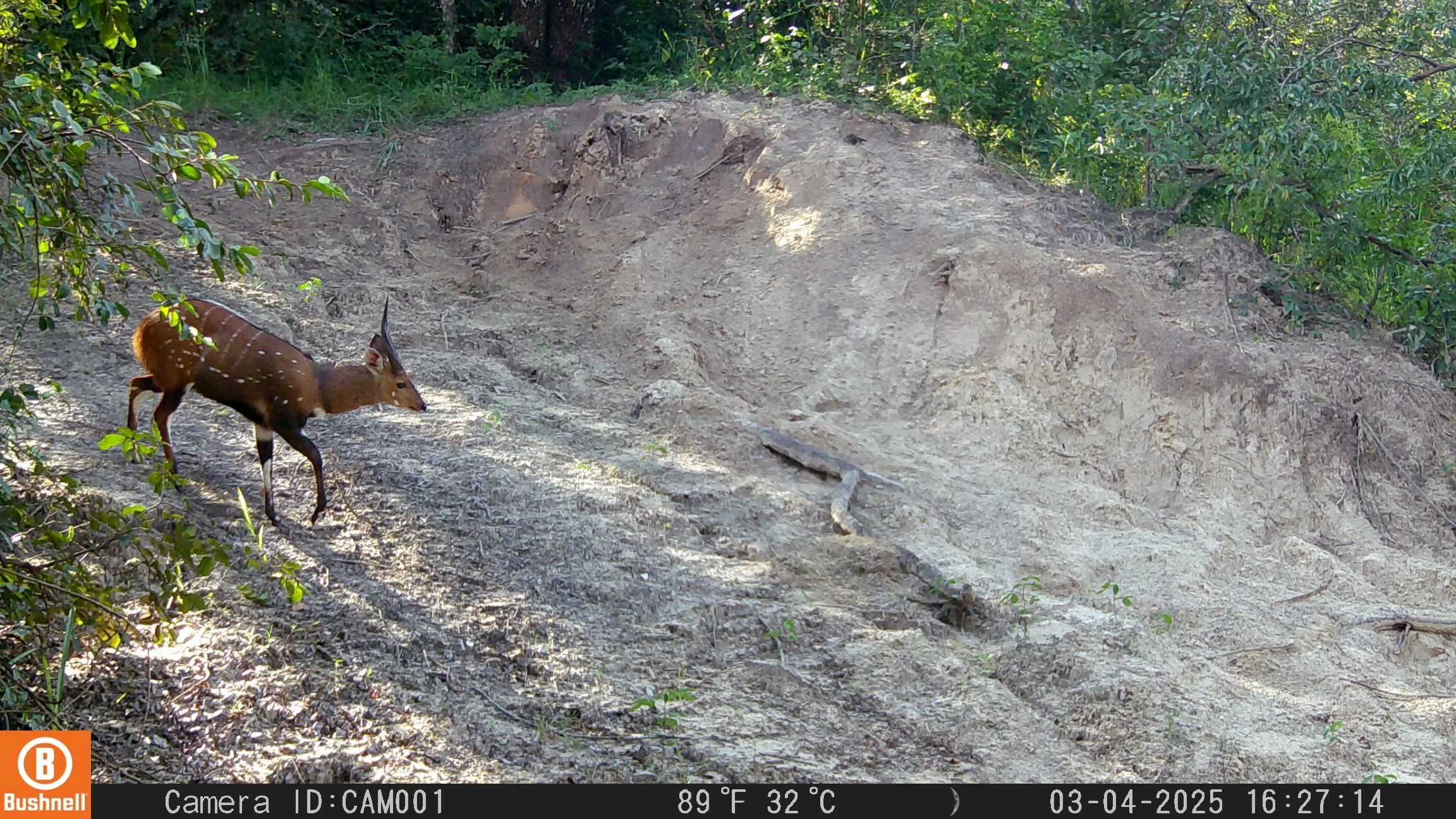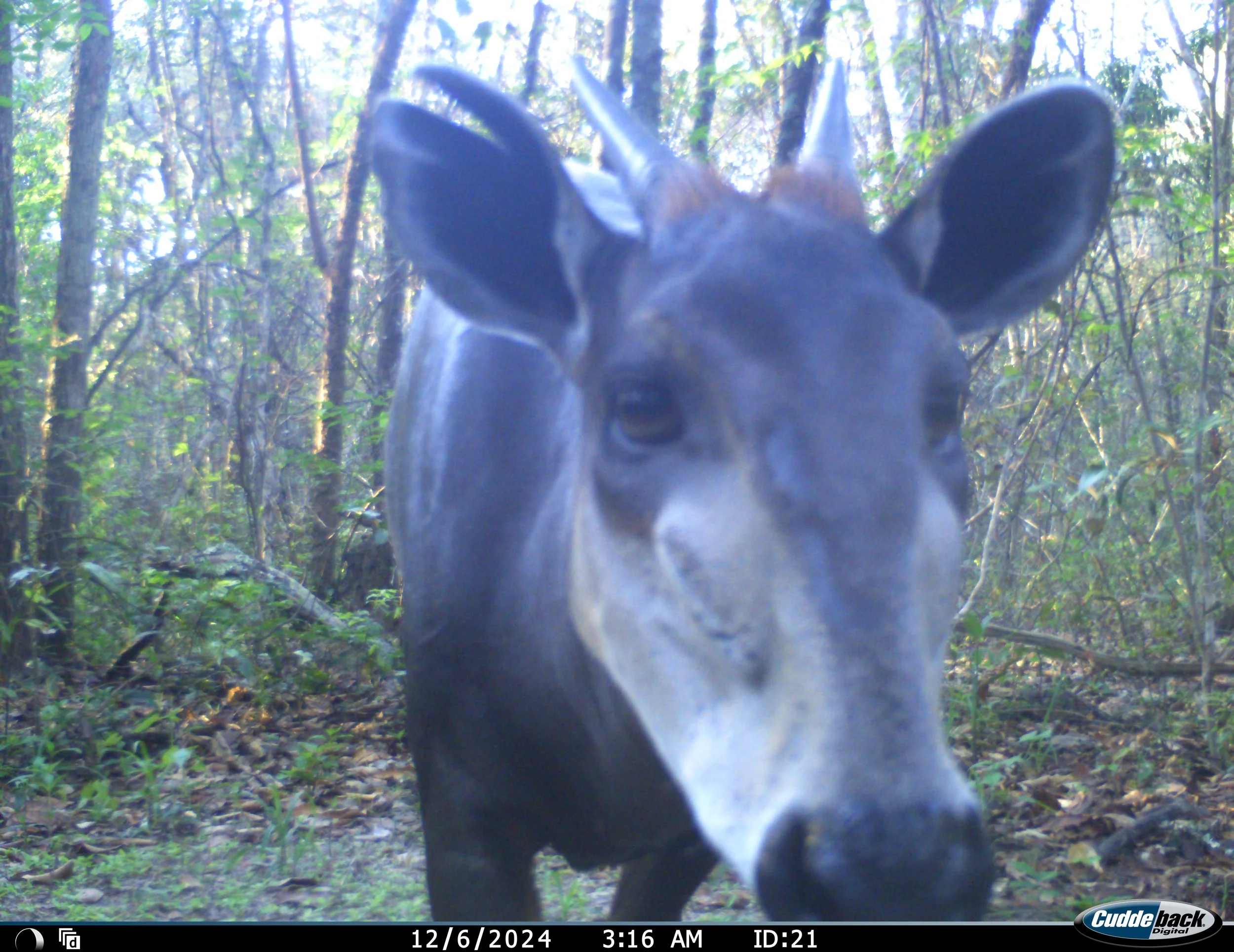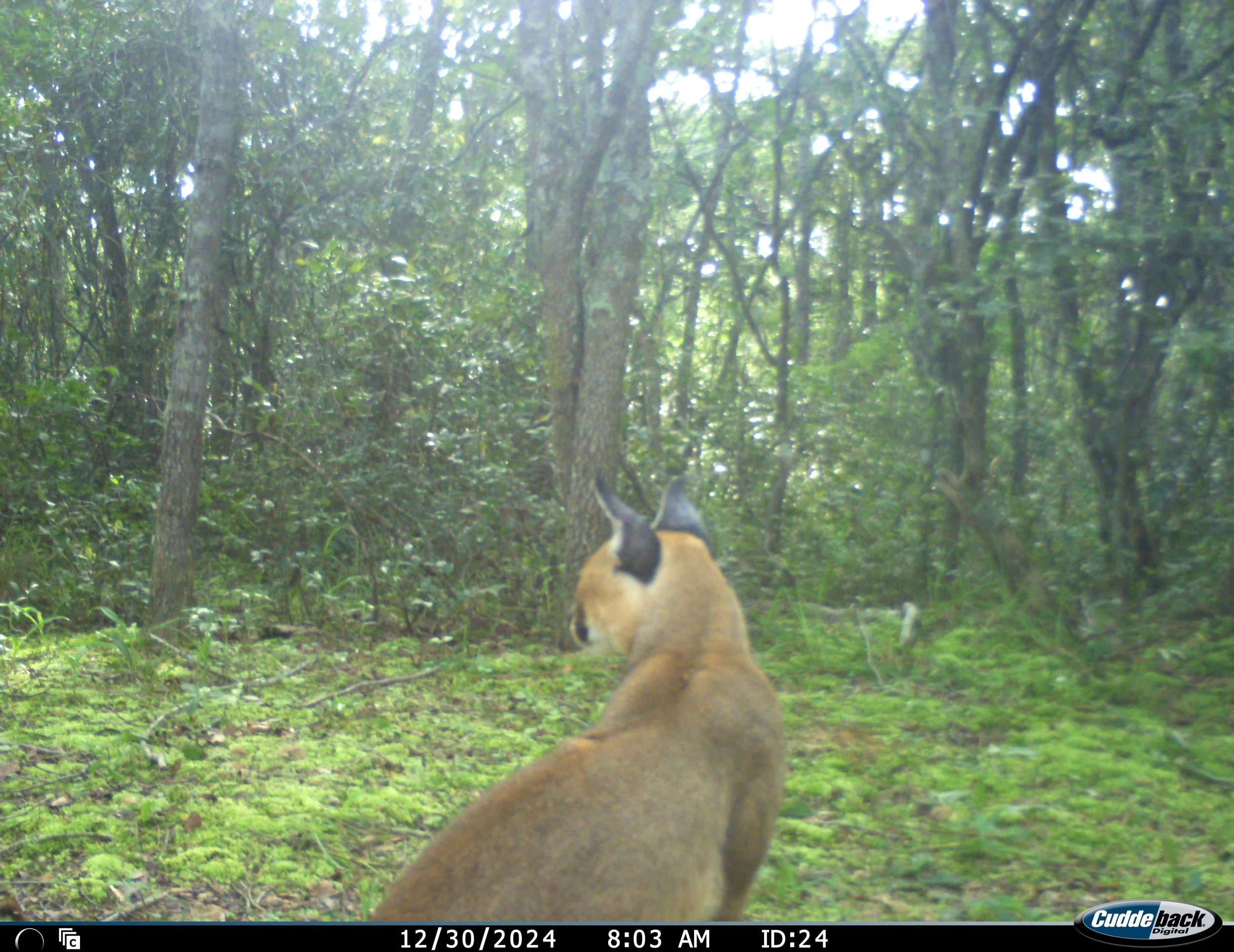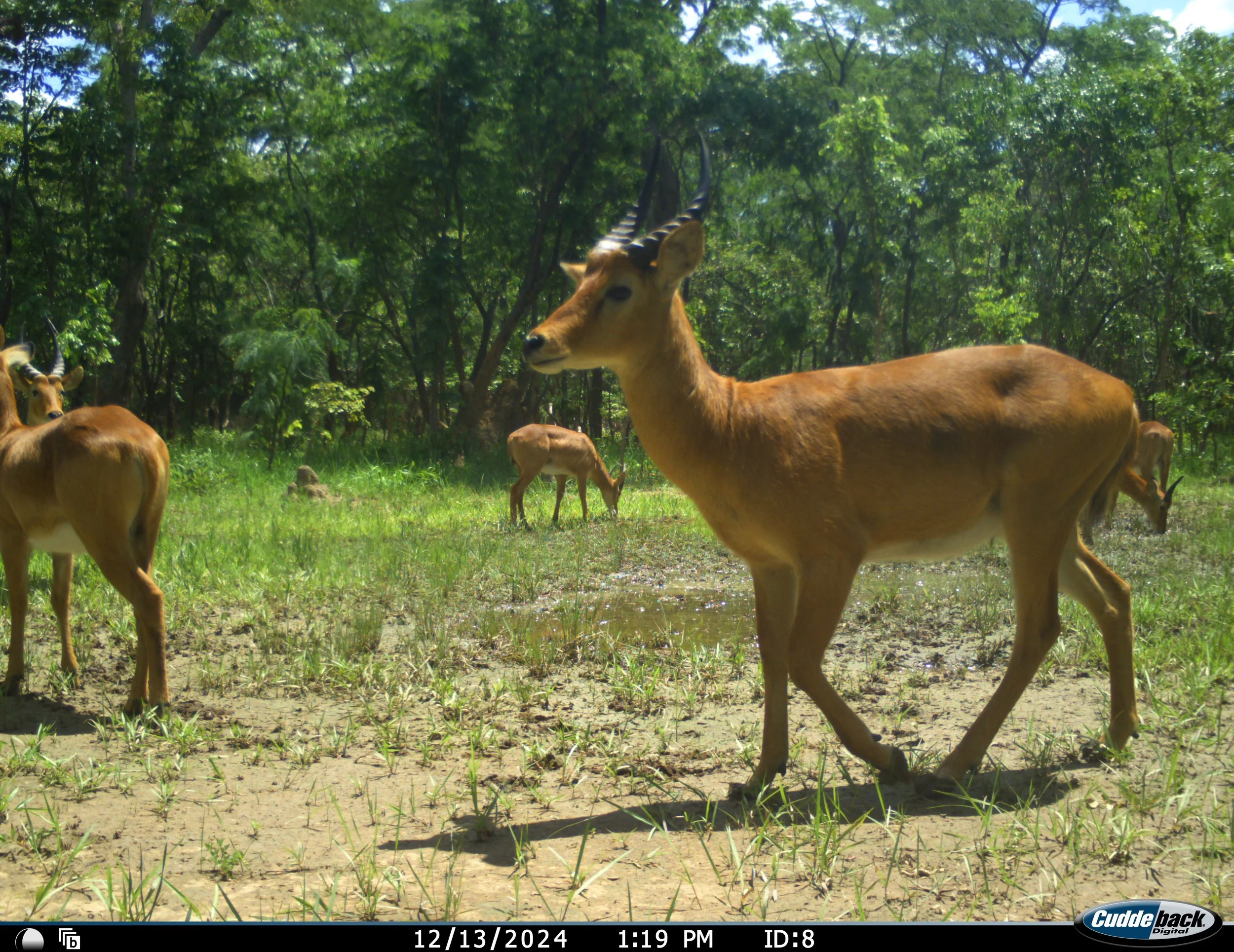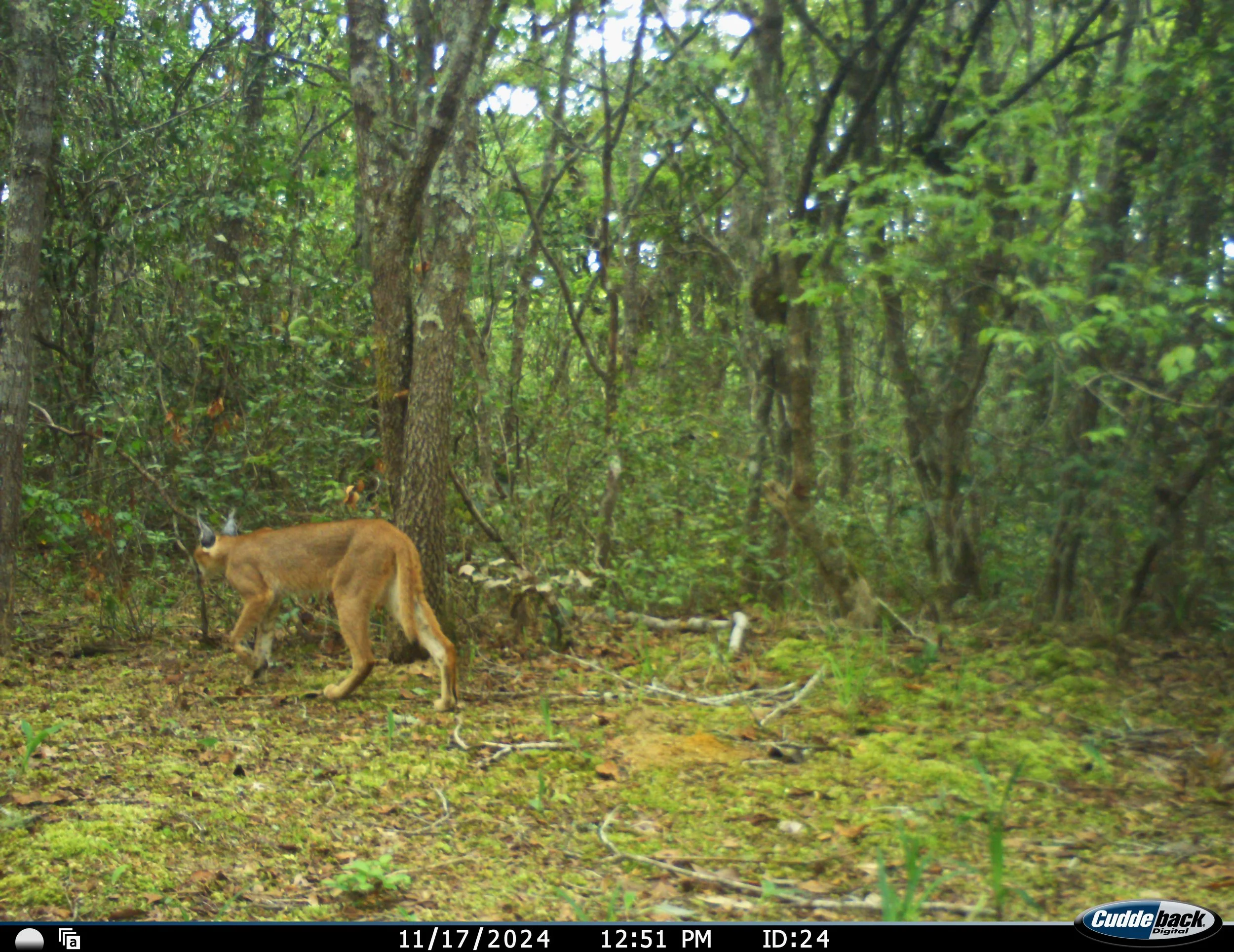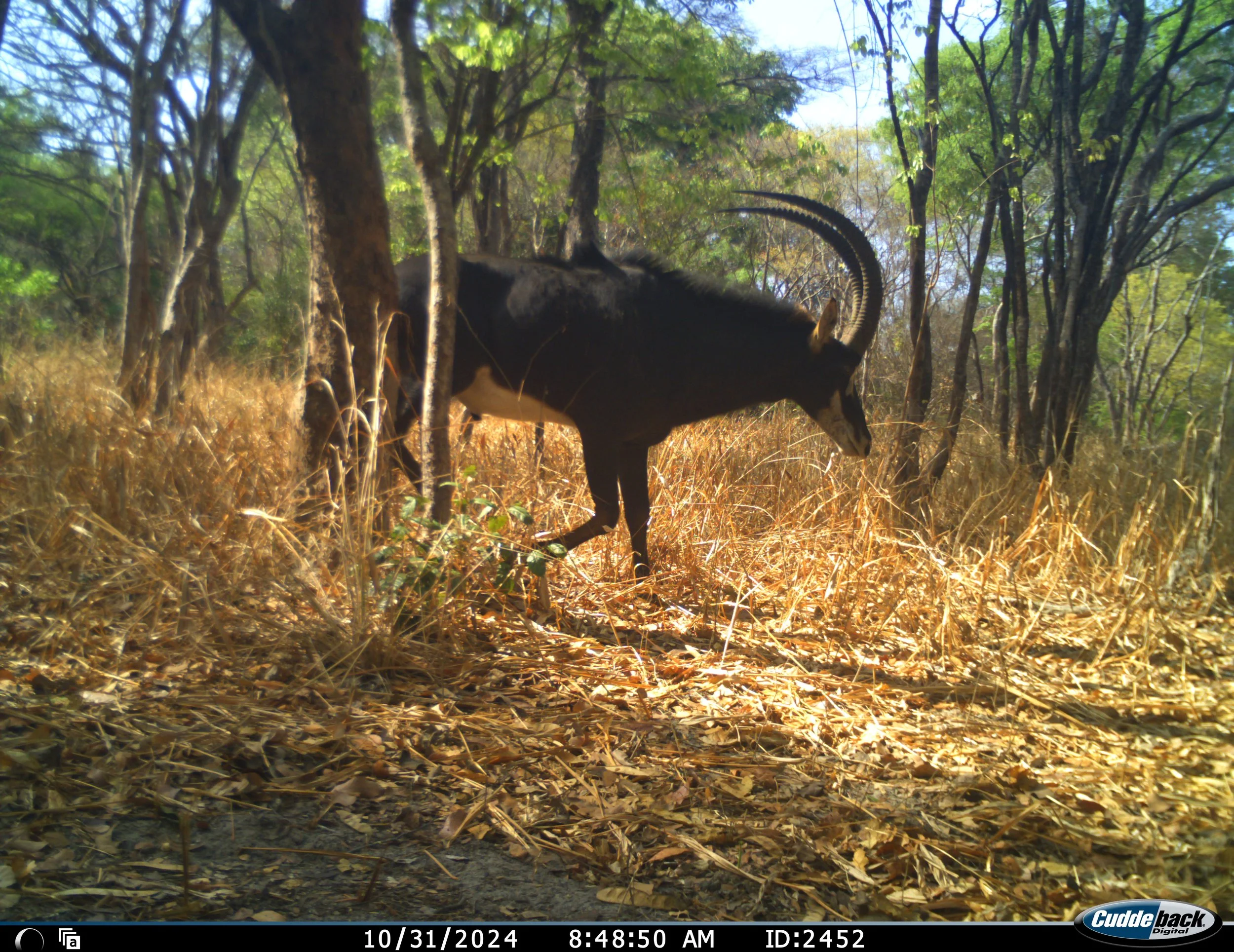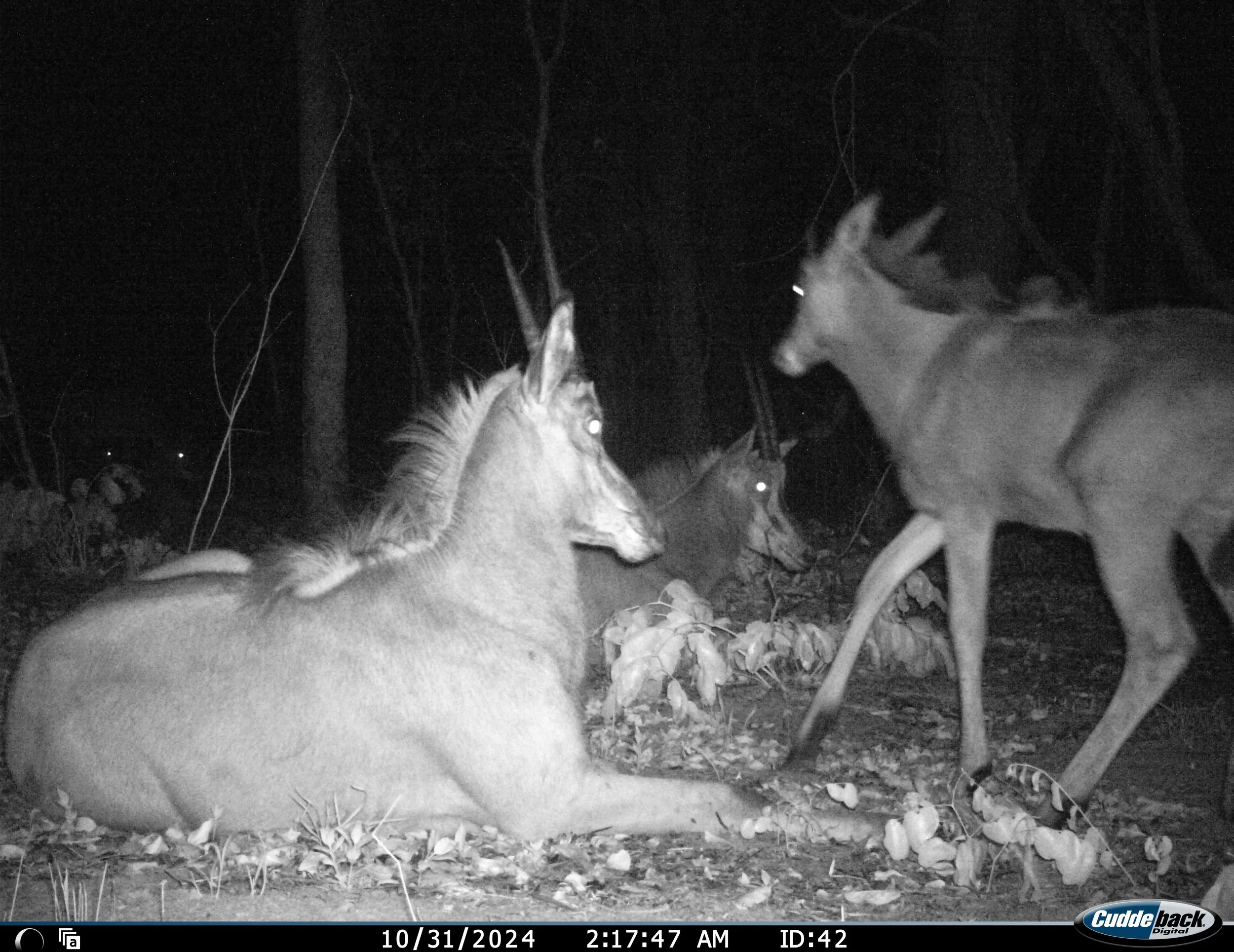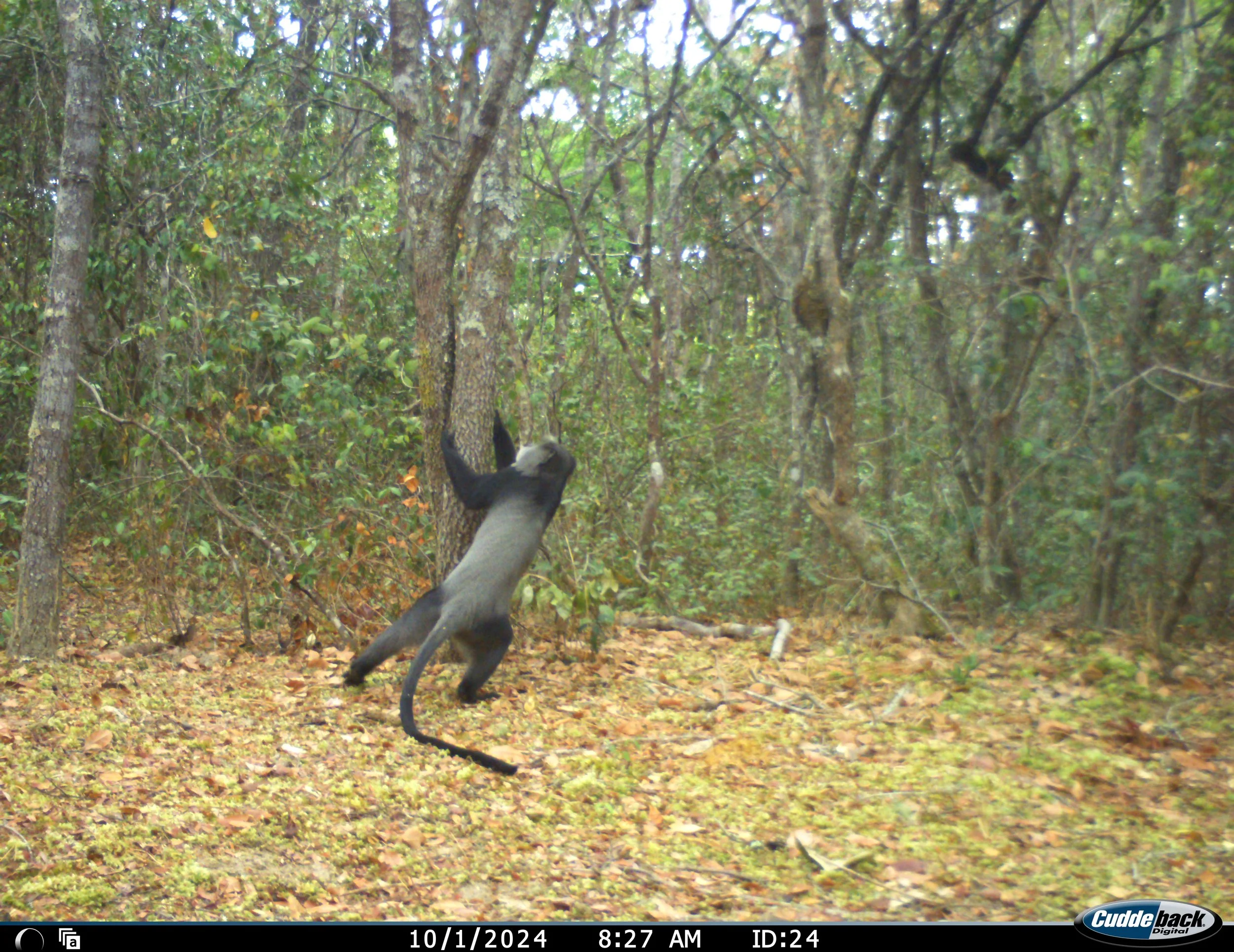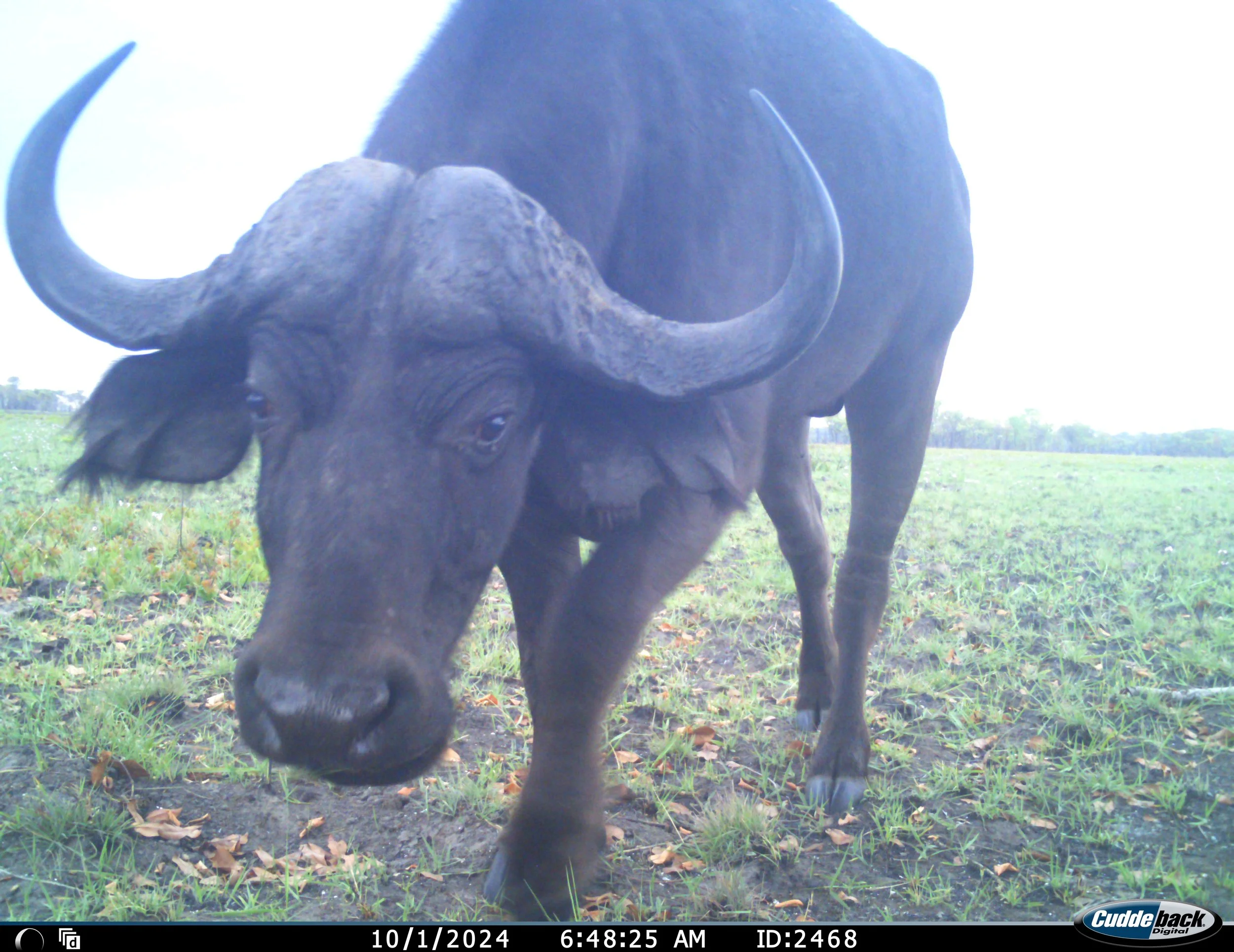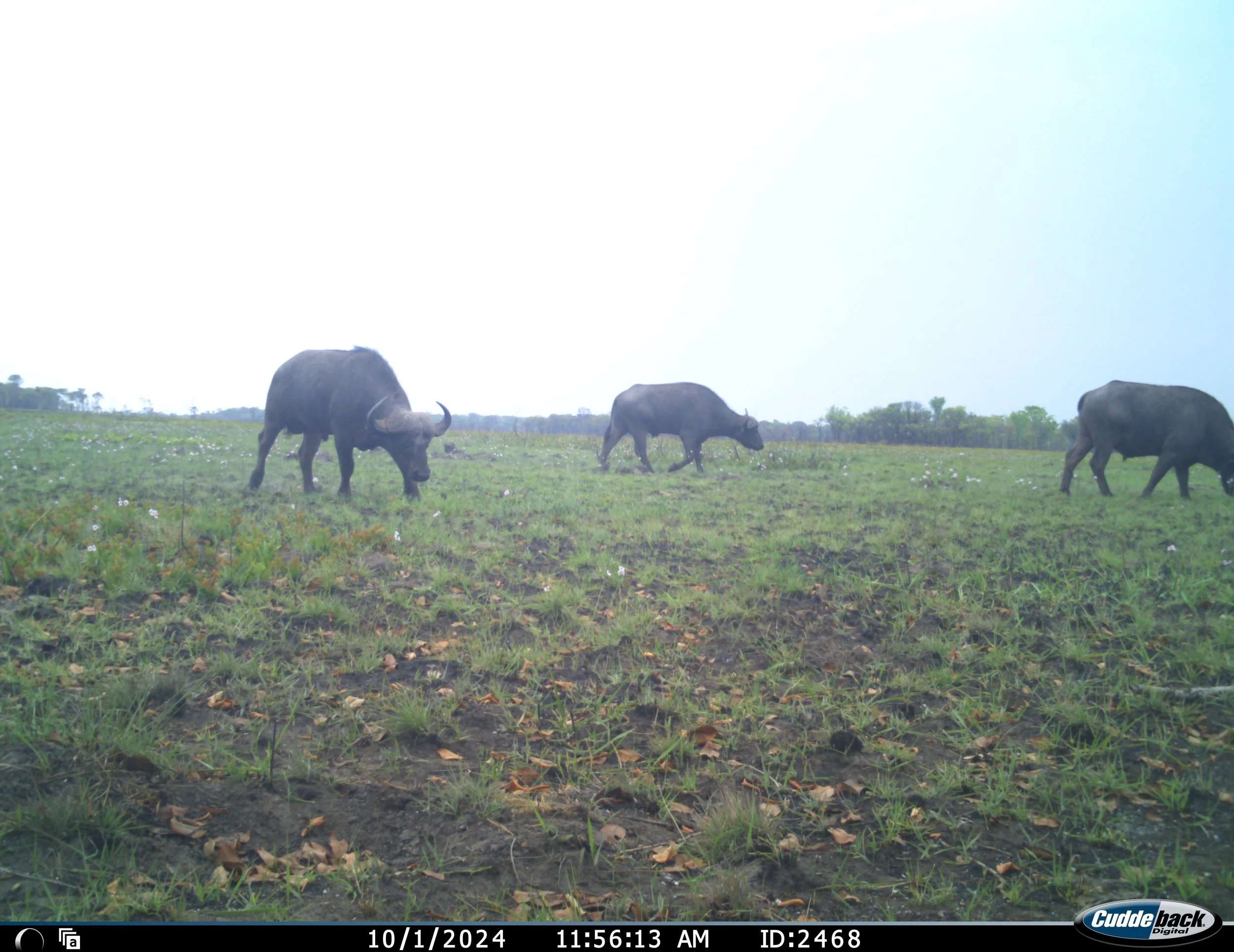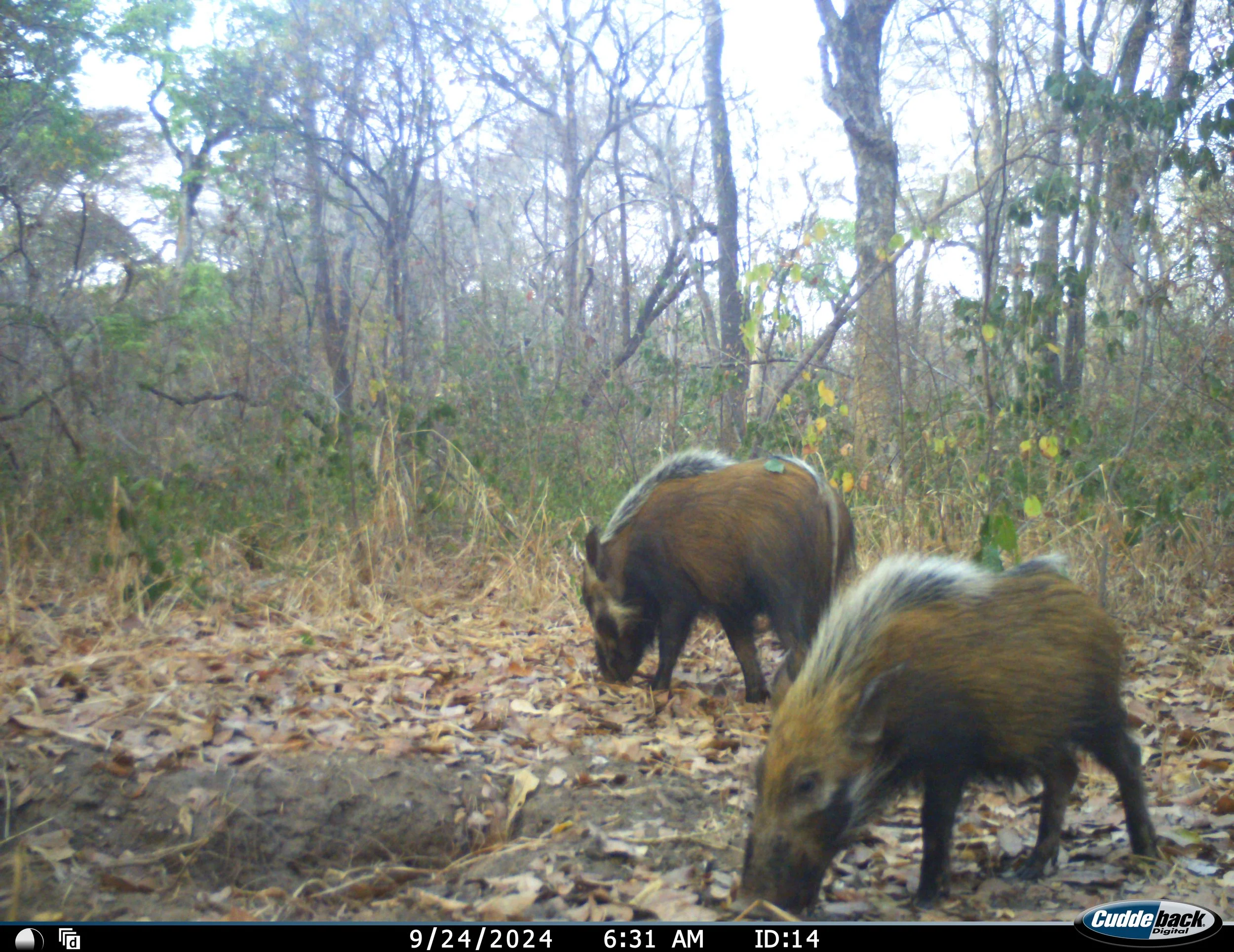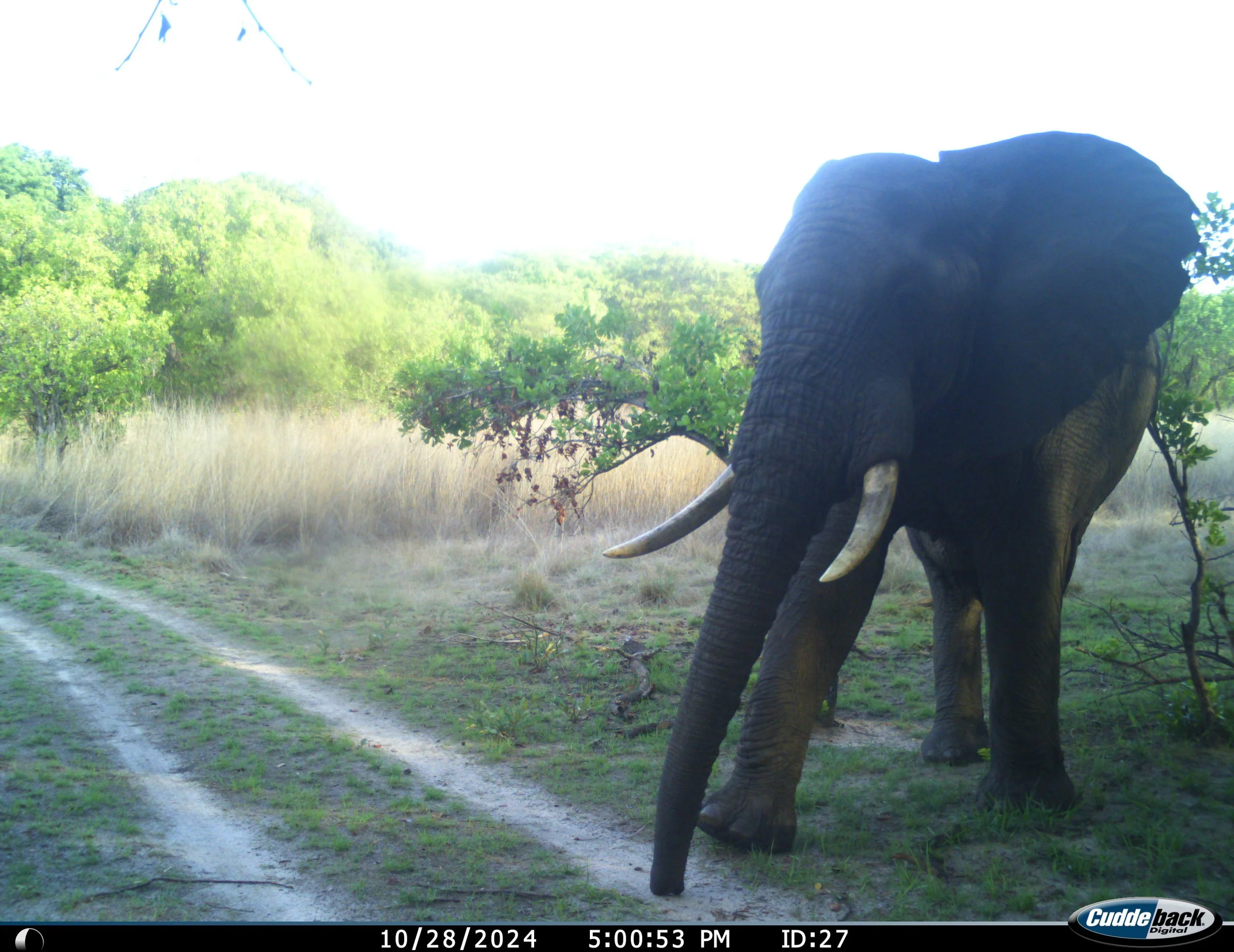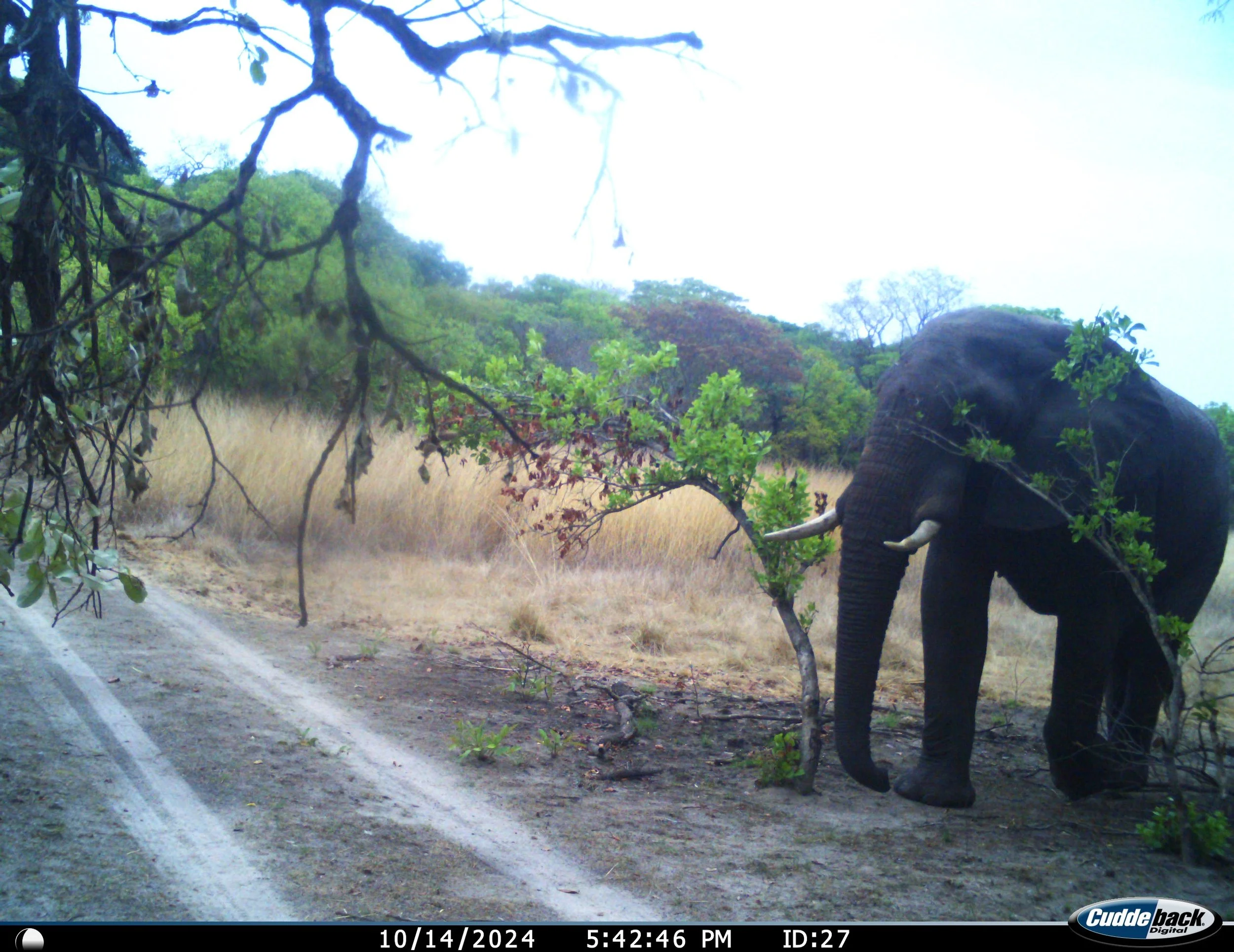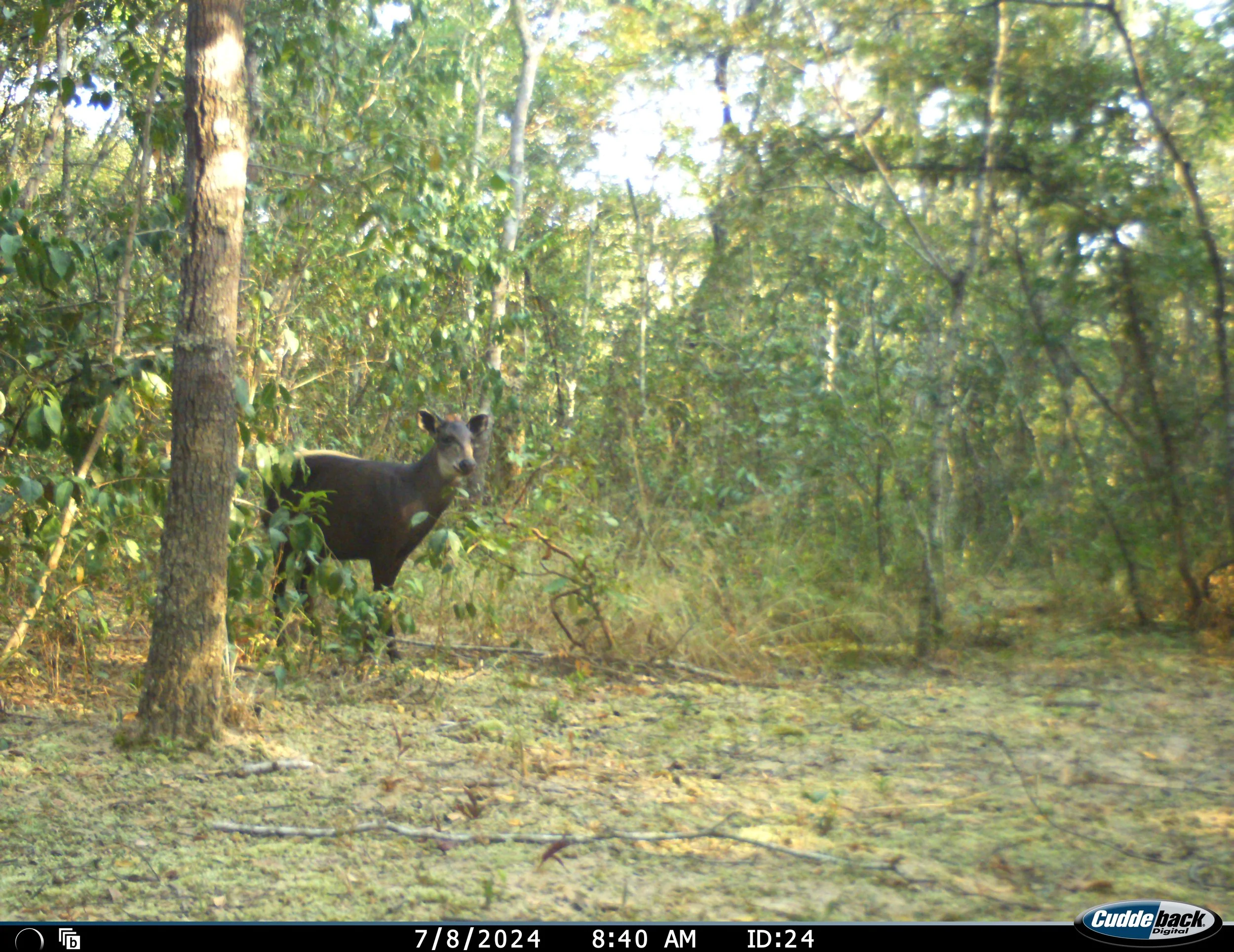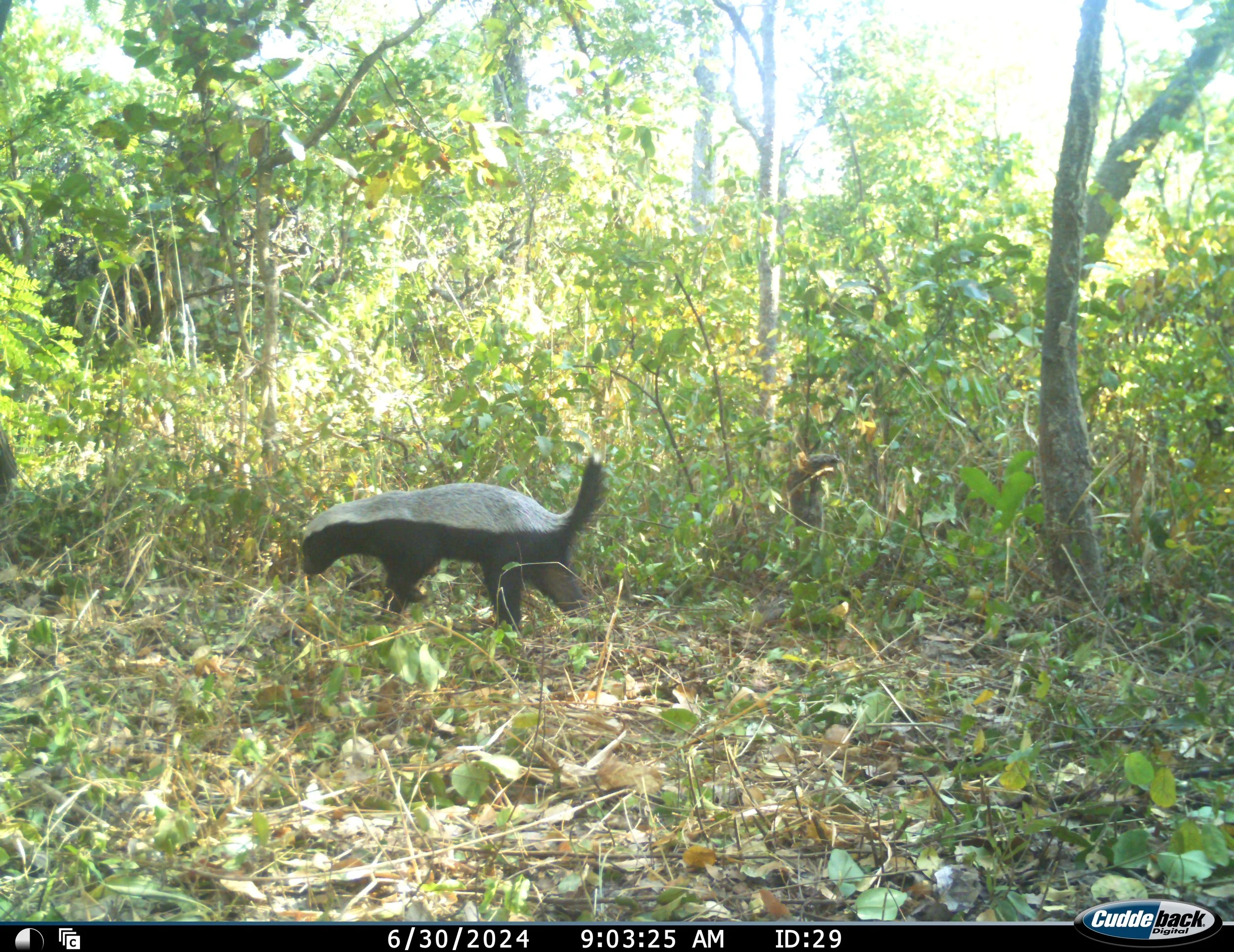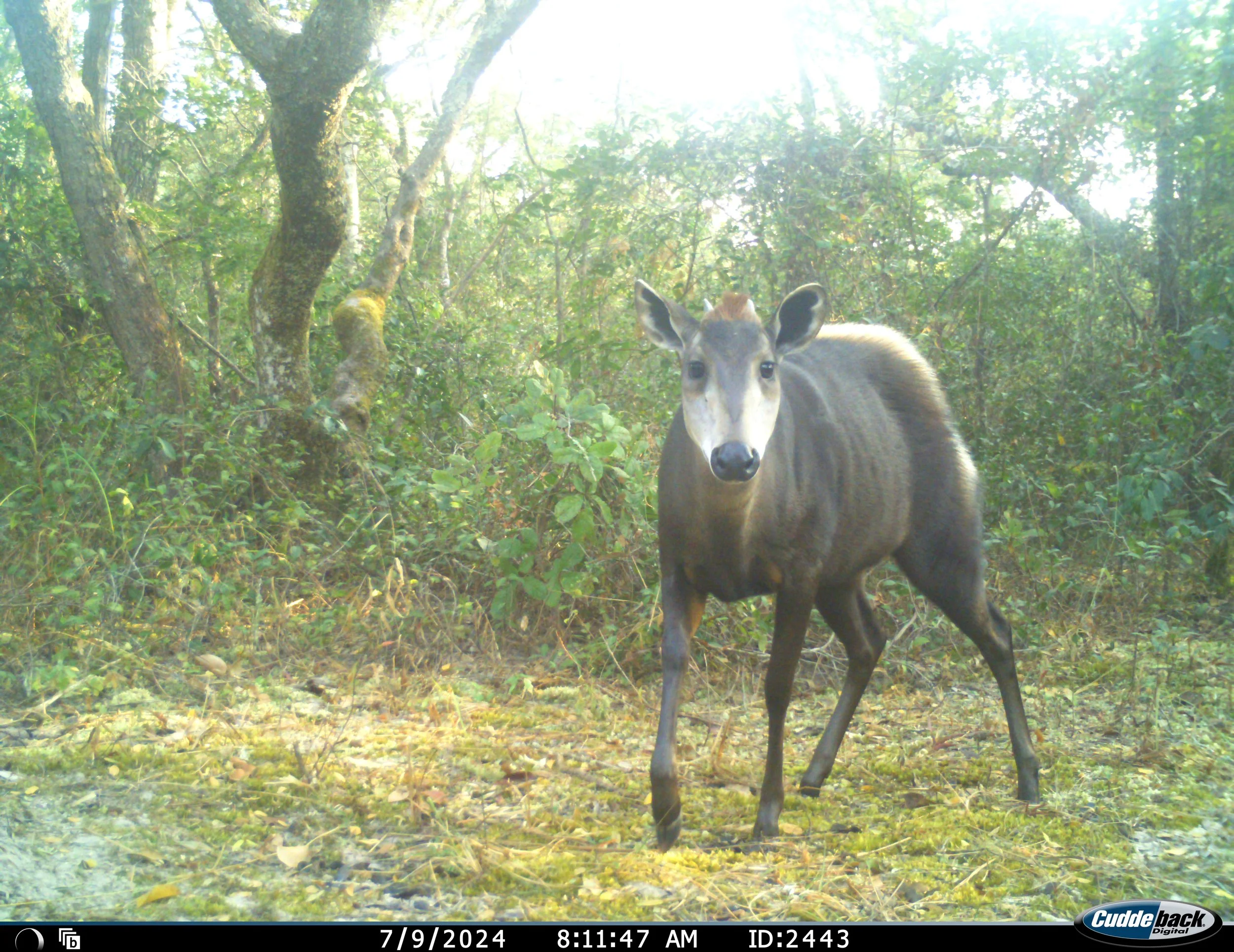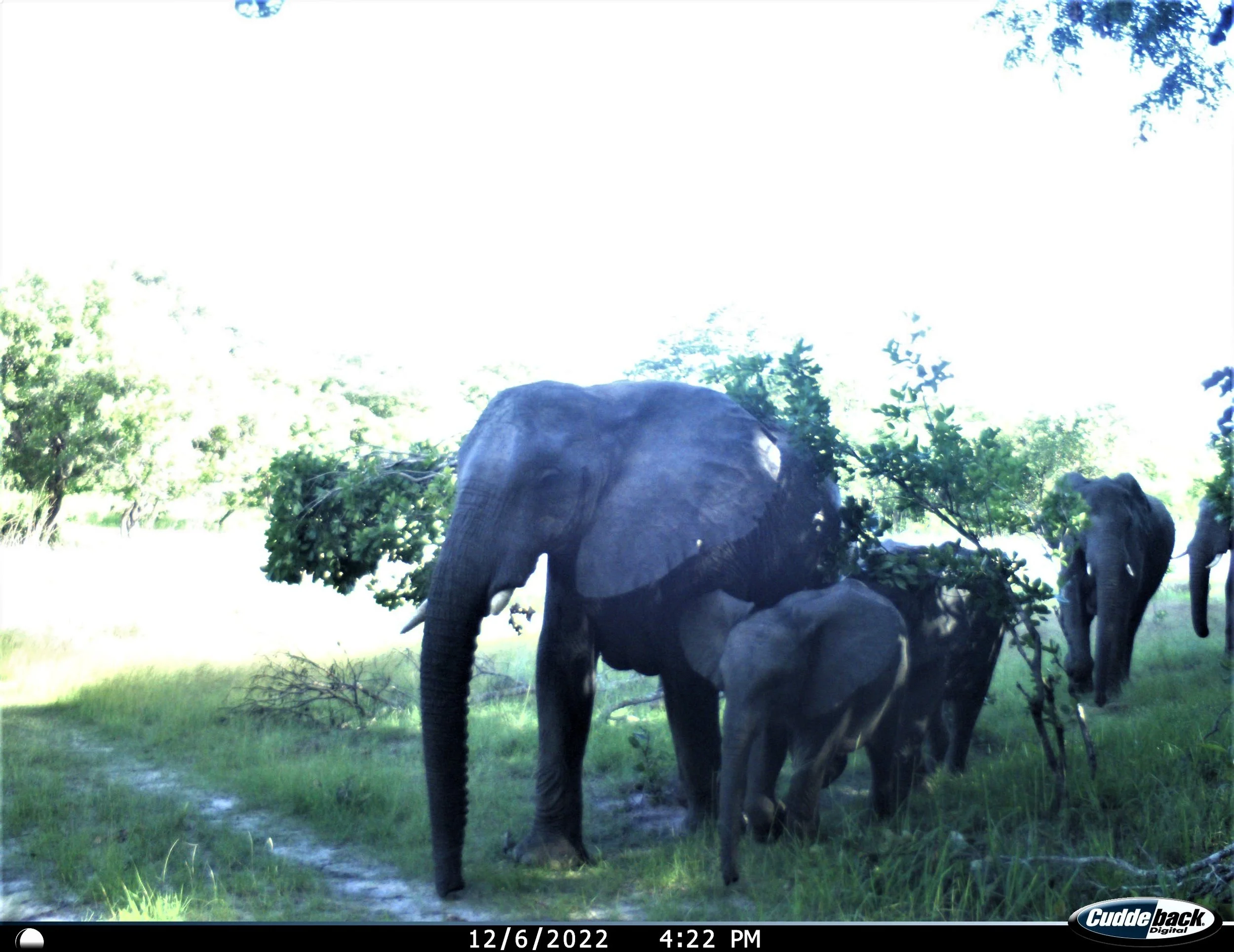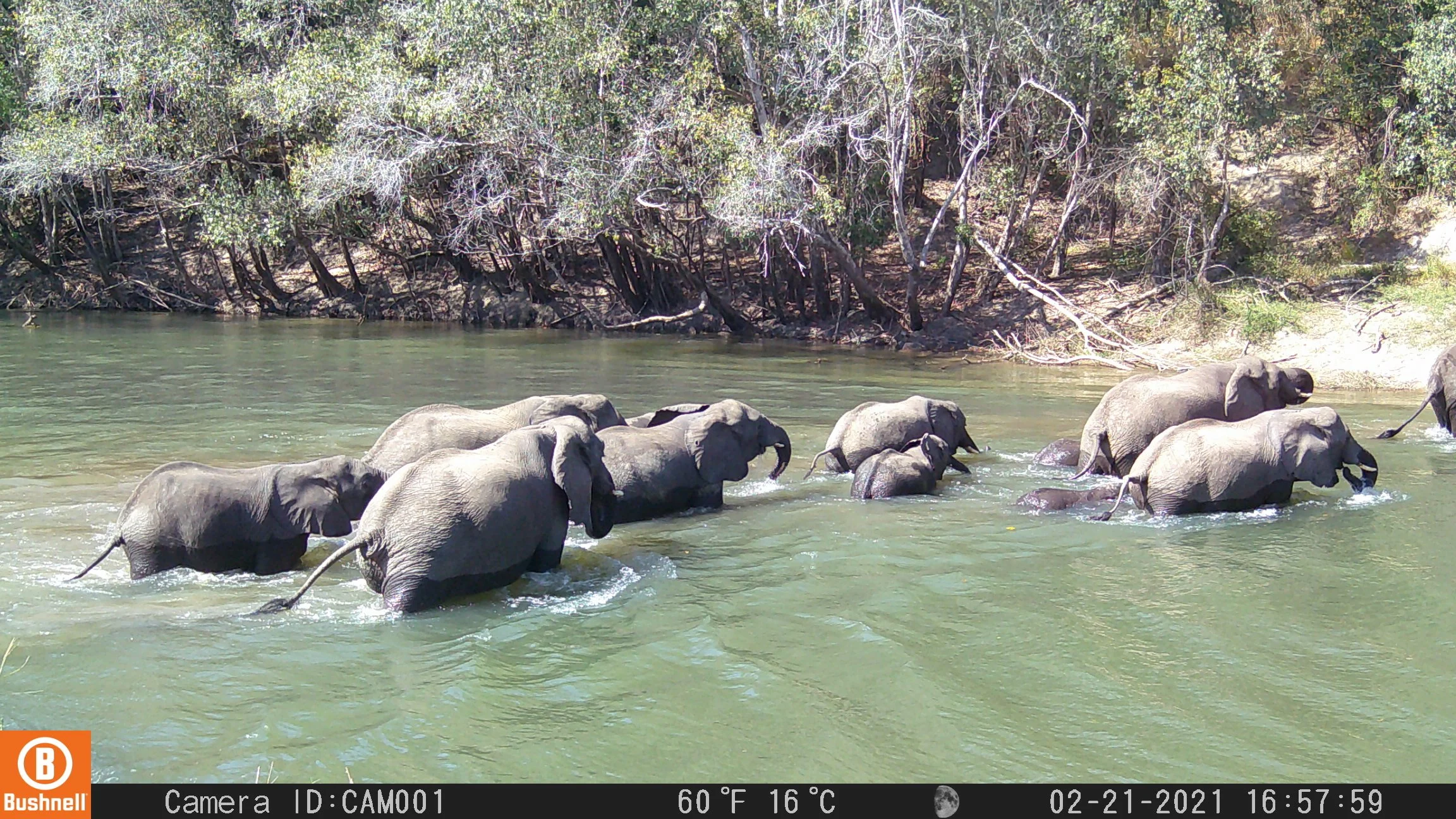The West Lunga ecosystem was once a refuge for a multitude of wildlife species and was considered to be a breeding ground for elephants. Over the last 50 years most mammal species have been severely impacted by illegal hunting and many have become locally extinct. Today there are remnant populations of a number of species that have learnt to survive by hiding in the extensive forest thicket known locally as Mavunda, but their numbers are critically low. WLCP aims to restore the habitat and protect the system so that these species can return and strengthen a regional wildlife corridor from the KAZA Trans Frontier Conservation Area through Kafue National Park and into West Lunga.
Credit: Theresa Roomer
Credit: Theresa Roomer
White Bellied or Tree Pangolin
The white bellied or tree pangolin (Phataginus tricuspis) occurs throughout the equatorial forests of central and western Africa. Pangolins are one of the most heavily trafficked animals in the world and all species are either registered by CITES as critically endangered, endangered or vulnerable, with the white bellied or tree pangolin listed as endangered. In Zambia, the white bellied or tree pangolin only occurs in the forests of north-western province and the West Lunga ecosystem provides ideal habitat for this little known species. These animals are threatened by illegal hunting and habitat degradation from deforestation and by working closely with partners at DNPW and Wildlife Crime Prevention, WLCP works to create a safe haven for this threatened species to thrive.
African Elephant
In the 1950s, surveys of the park encountered vast populations of elephant, prompting a discussion about changing the park’s name to ‘Lunga Elephant Reserve.’ The name was never changed and elephants have all but disappeared from the landscape. However, with improved management their numbers are increasing through an ancient ‘corridor’ with Kafue.
Yellow-Backed Duiker
West Lunga National Park was gazetted in the 1940s to protect the population of yellow backed duiker that occurred within the system, which was considered to have been the largest in Zambia. Even with the high levels of hunting over the years, this rare antelope species is still here, and whilst it is extremely elusive, our camera traps occasionally catch a glimpse.
Other animals that are known to occur in the West Lunga ecosystem are buffalo, oribi, puku, bushbuck, reedbuck, sitatunga, blue duiker, common duiker, klipspringer, Sharpe’s grysbok, sable antelope, hippo, crocodile, vervet monkey, samango monkey, Kindae baboon, numerous species of mongoose, bush pig, cane rat, thick-tailed bushbaby, civet, genet, caracal, serval, side striped jackal, and both species of otter.
West Lunga Camera Traps
Important Bird Area of Zambia
West Lunga National Park and Lukwakwa GMA were designated an Important Bird Area in 2005 by BirdLife International. Some of these important bird species include: Gorgeous bush shrike (Perrin’s), Crested guineafowl, Purple throated cuckoo-shrike, Margaret’s batis, Rufous-bellied tit, Square-tailed drongo, African finfoot, Pel’s fishing owl, Böhms bee-eater, Half collared kingfisher, Western bronze naped pigeon, Lady Ross’ turaco, Schallow’s turaco, Cassin’s flycatcher, Evergreen forest warbler, Laura’s woodland warbler, Grey apalis, and Blue-mantled crested flycatcher.
